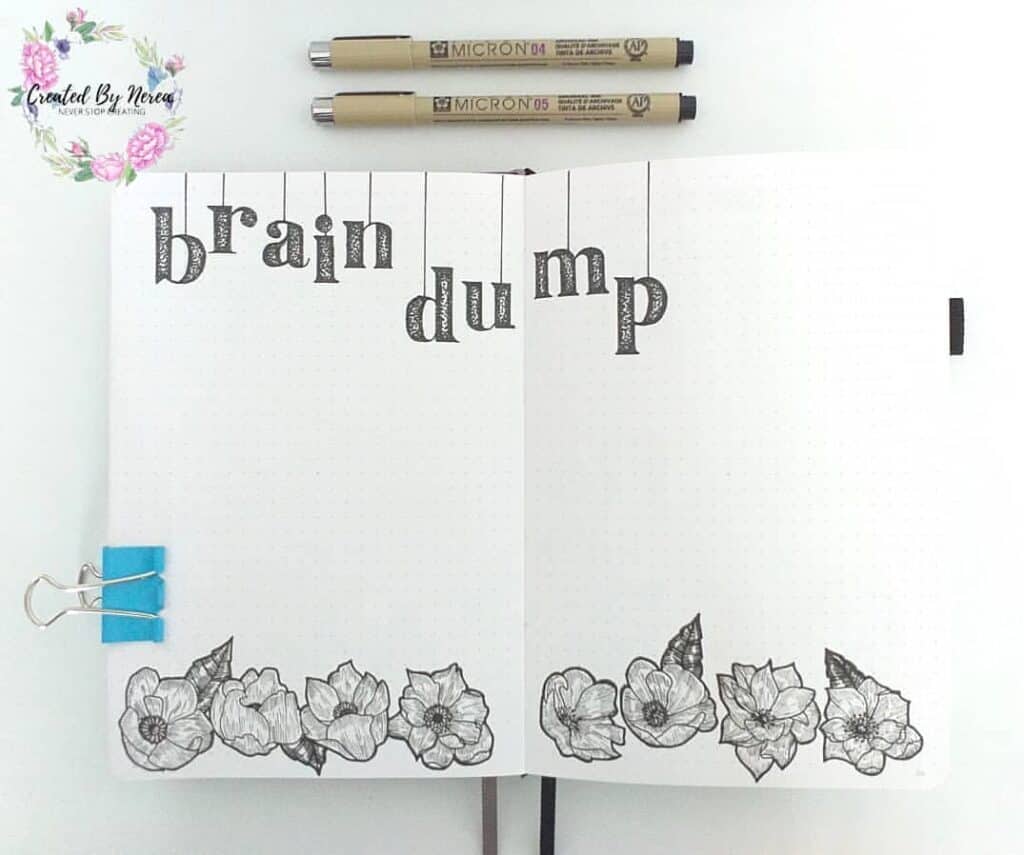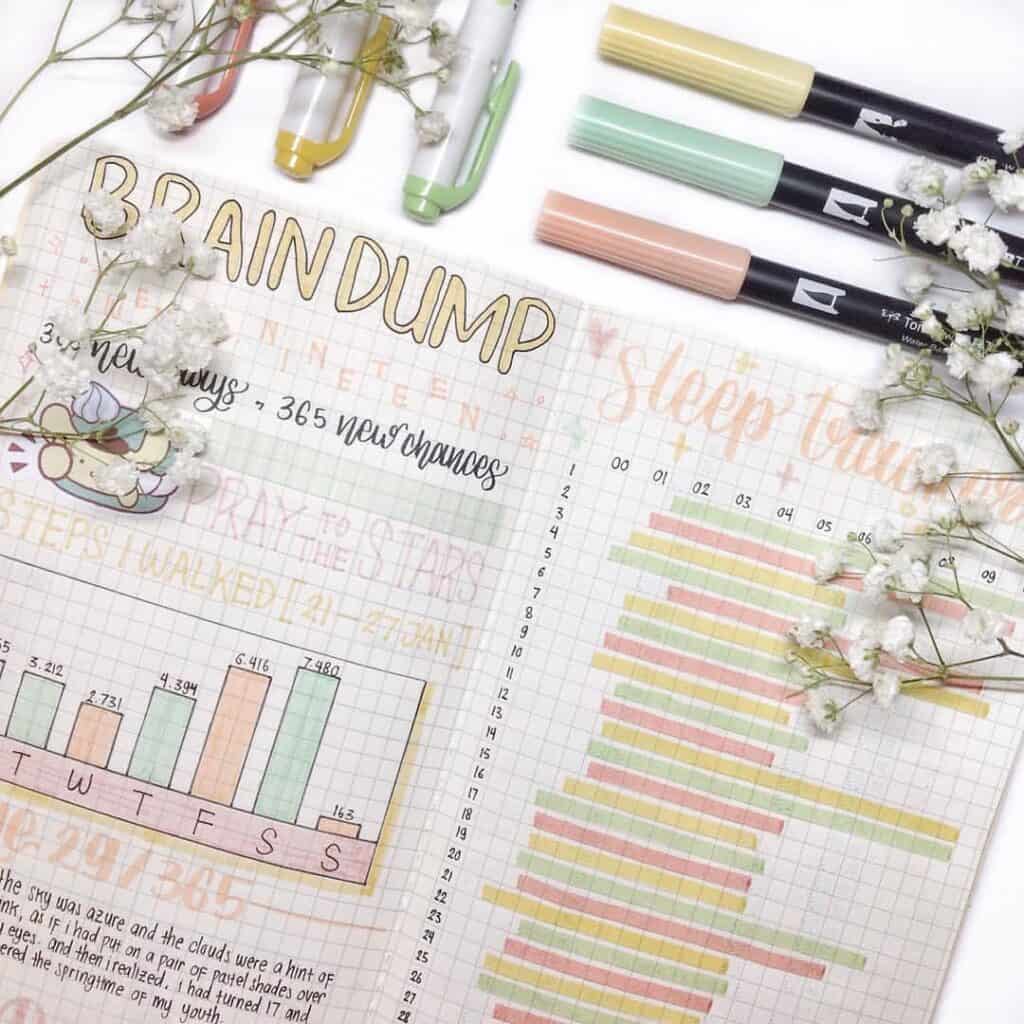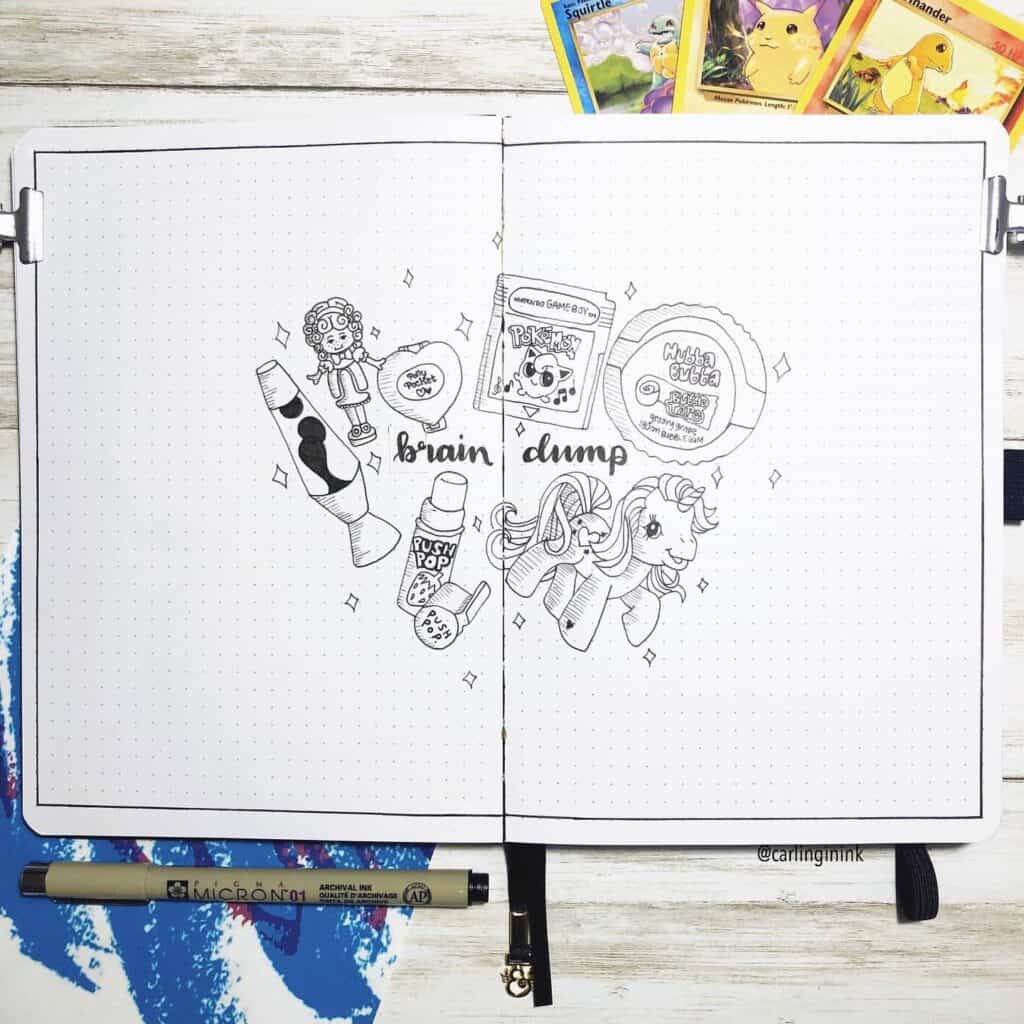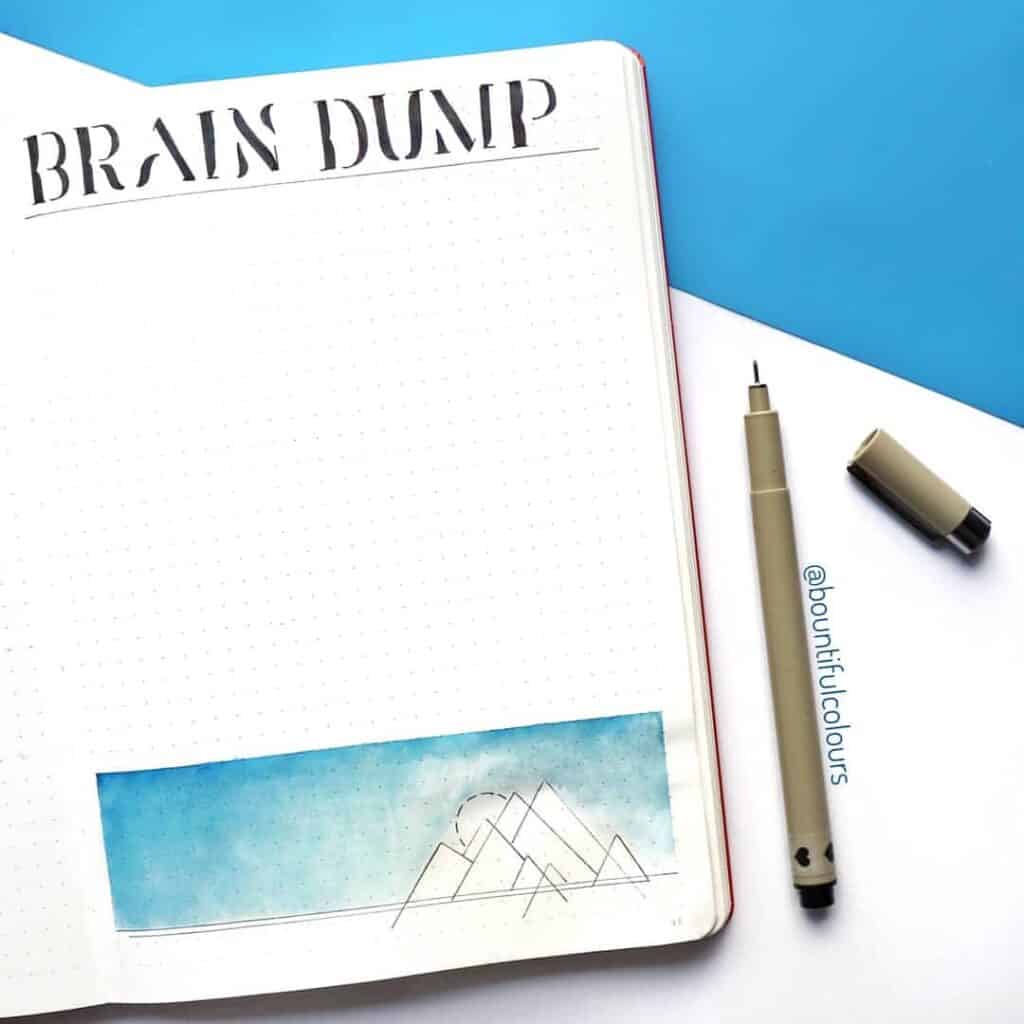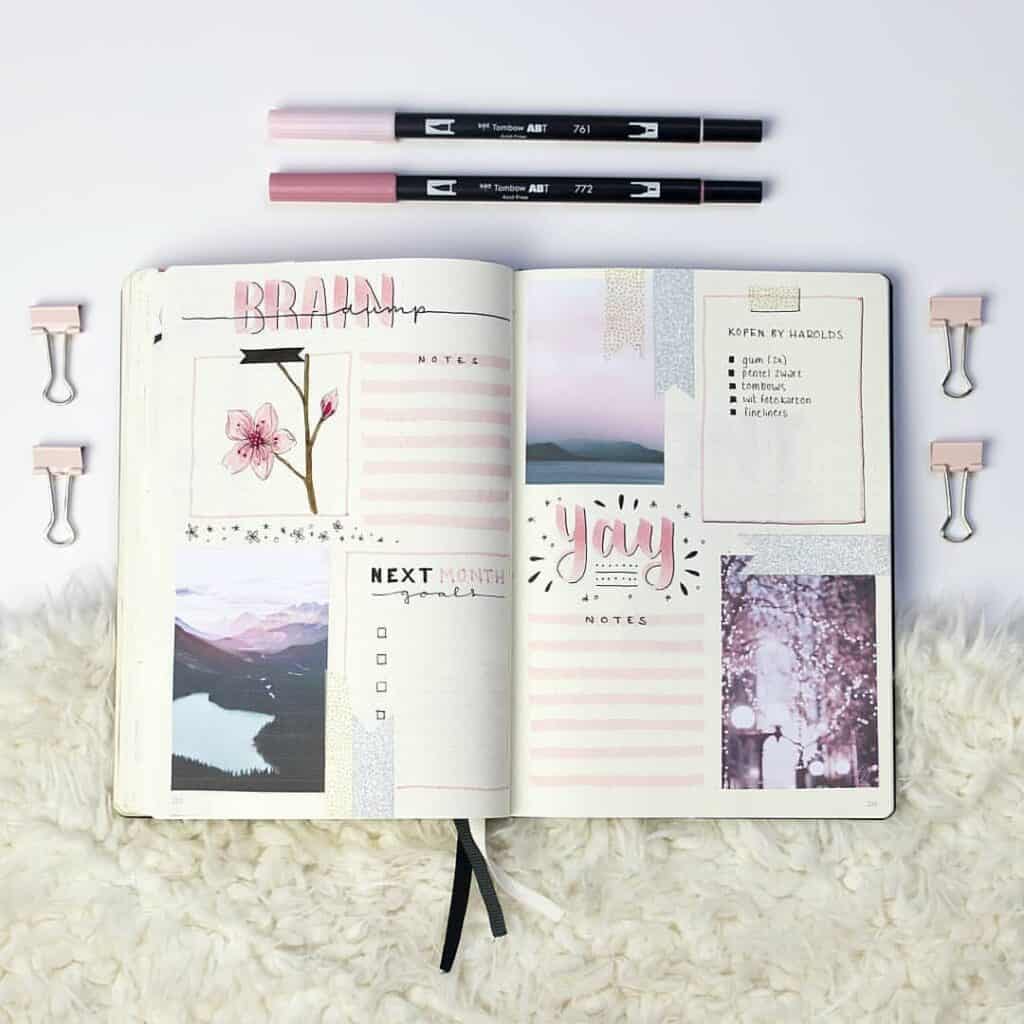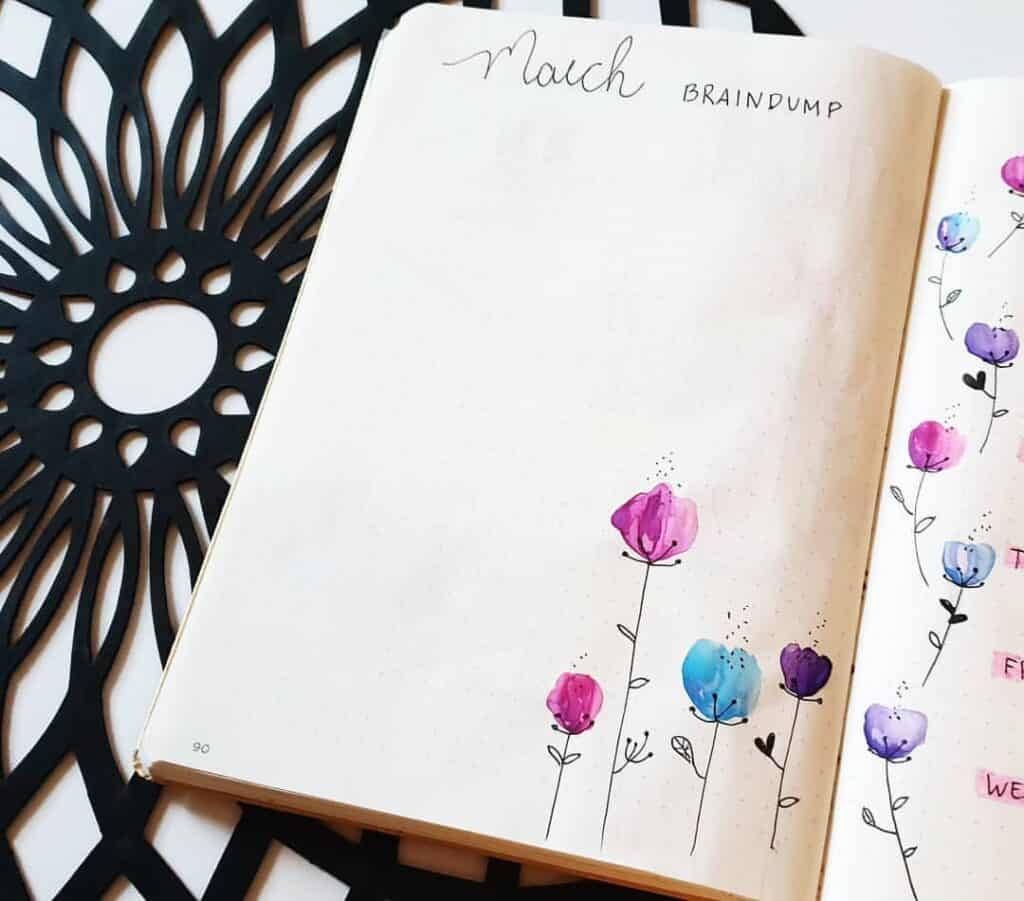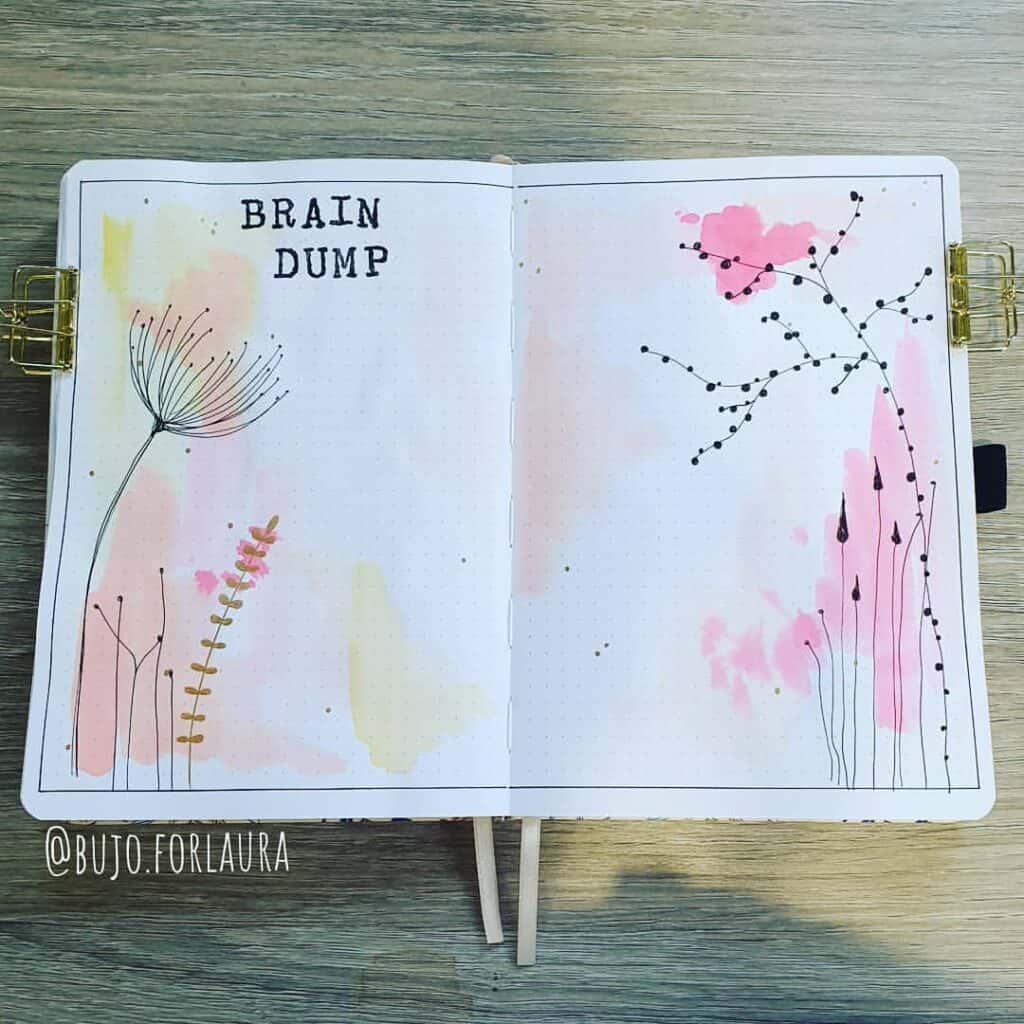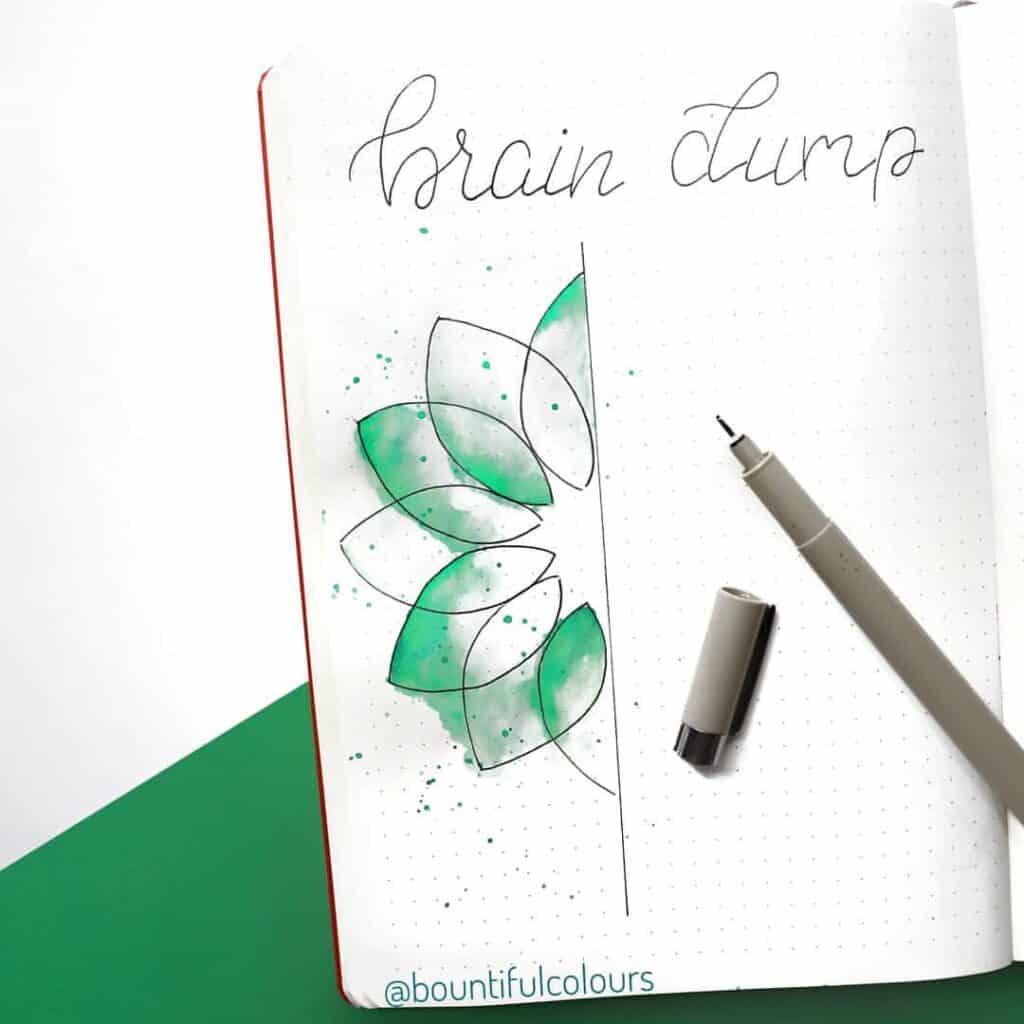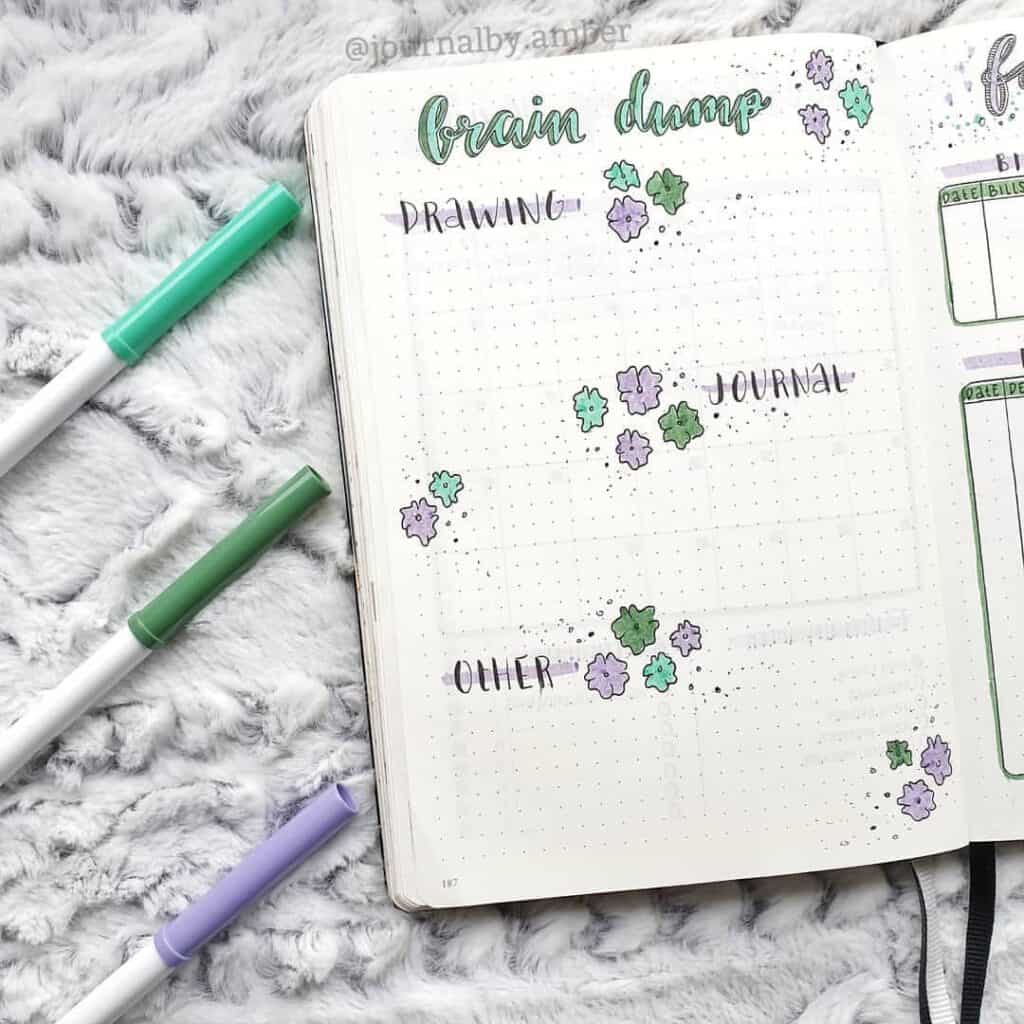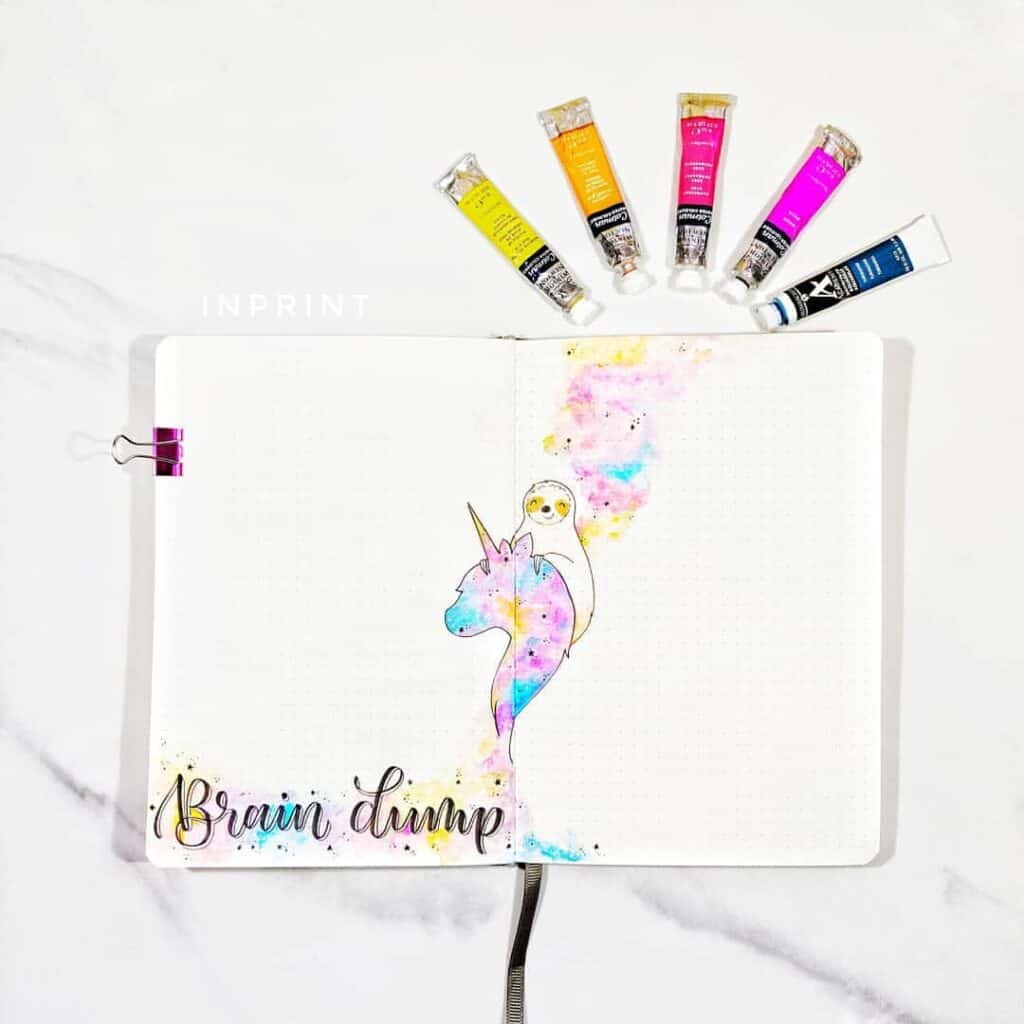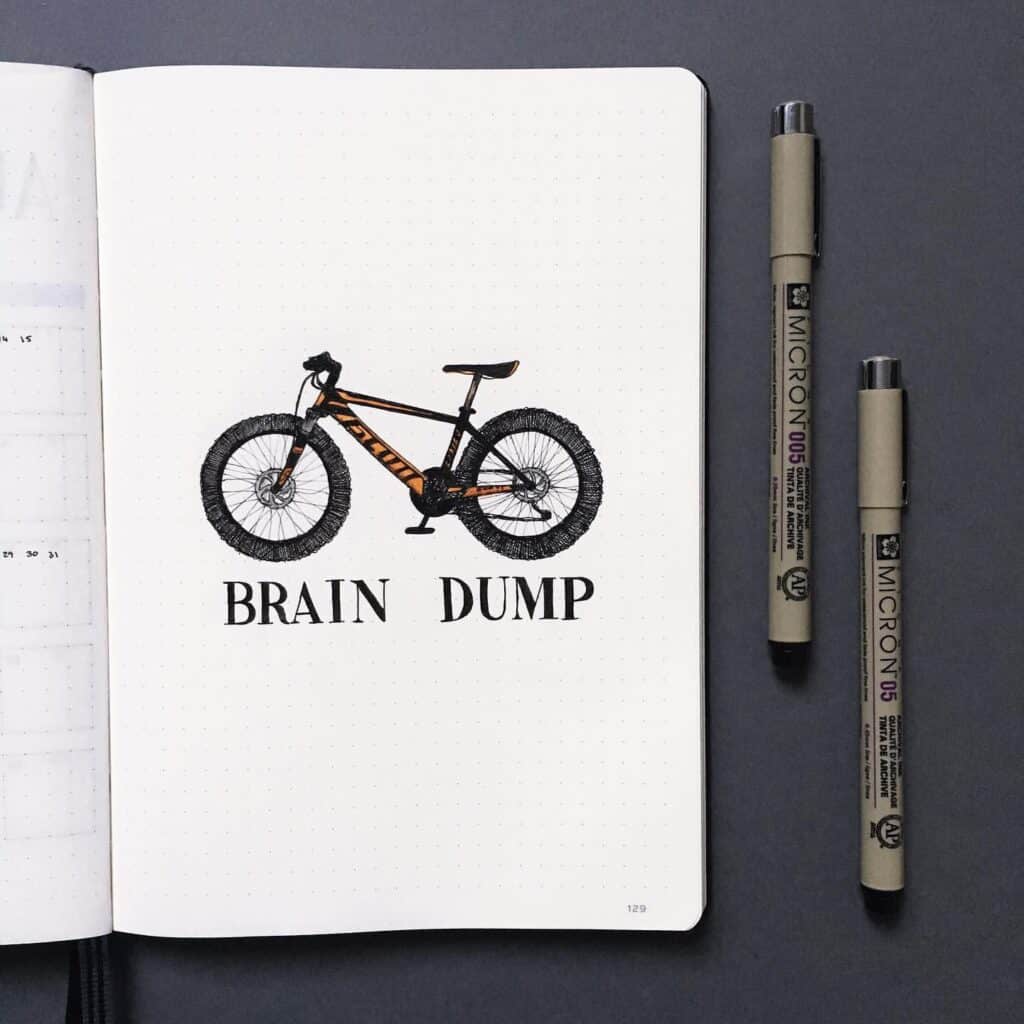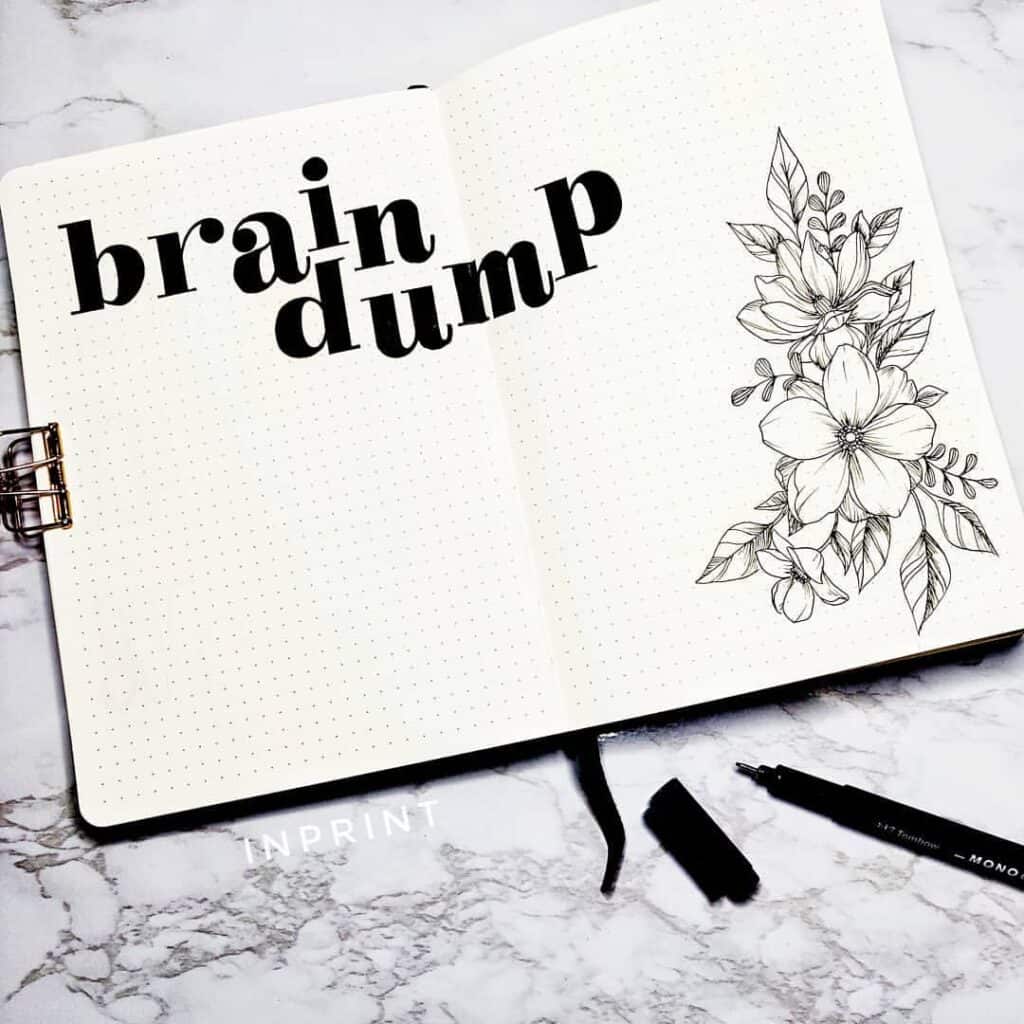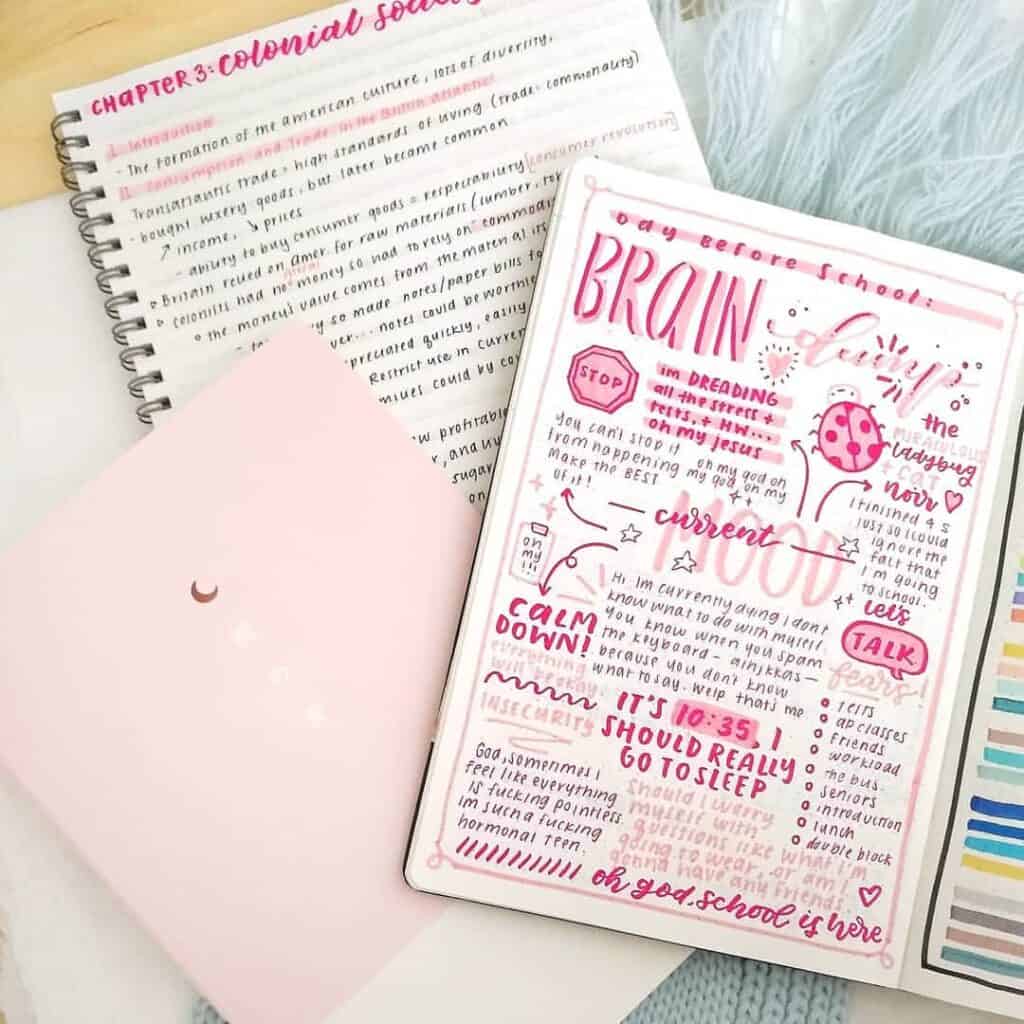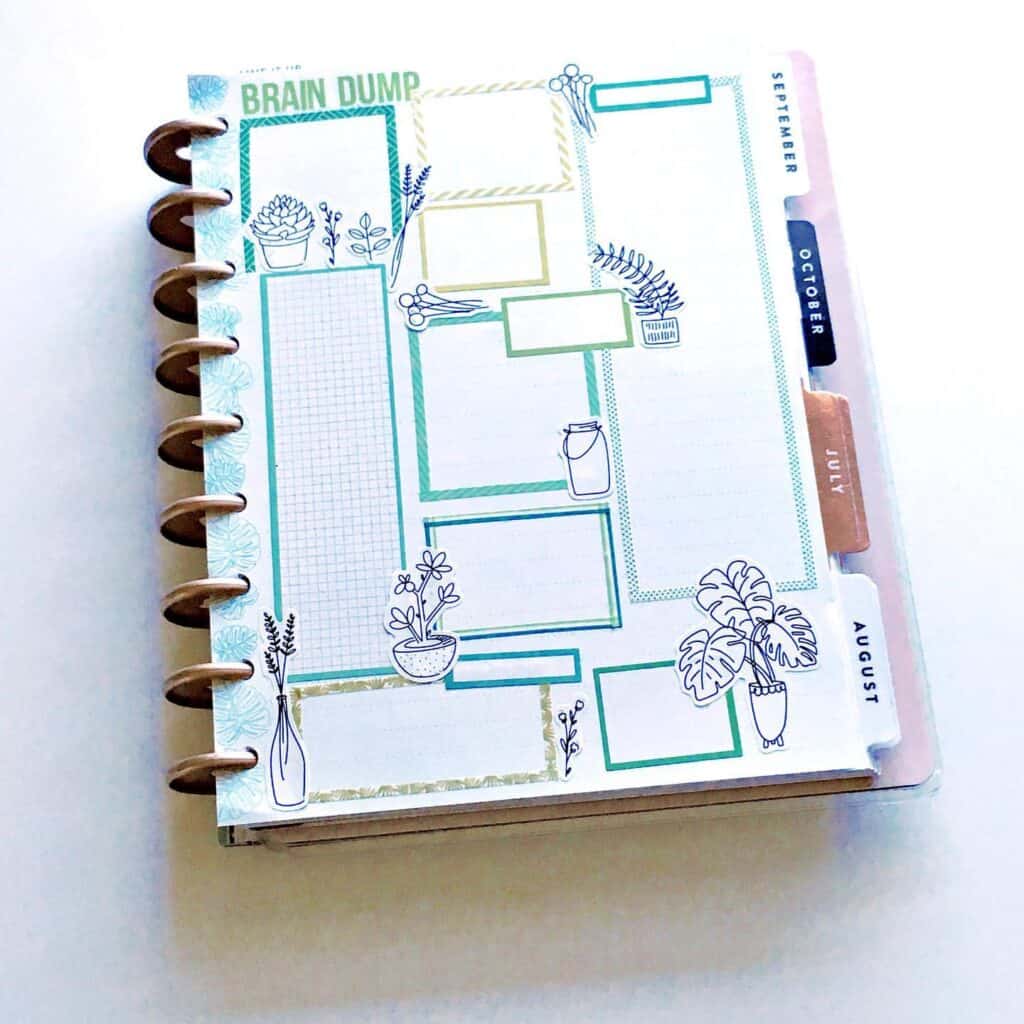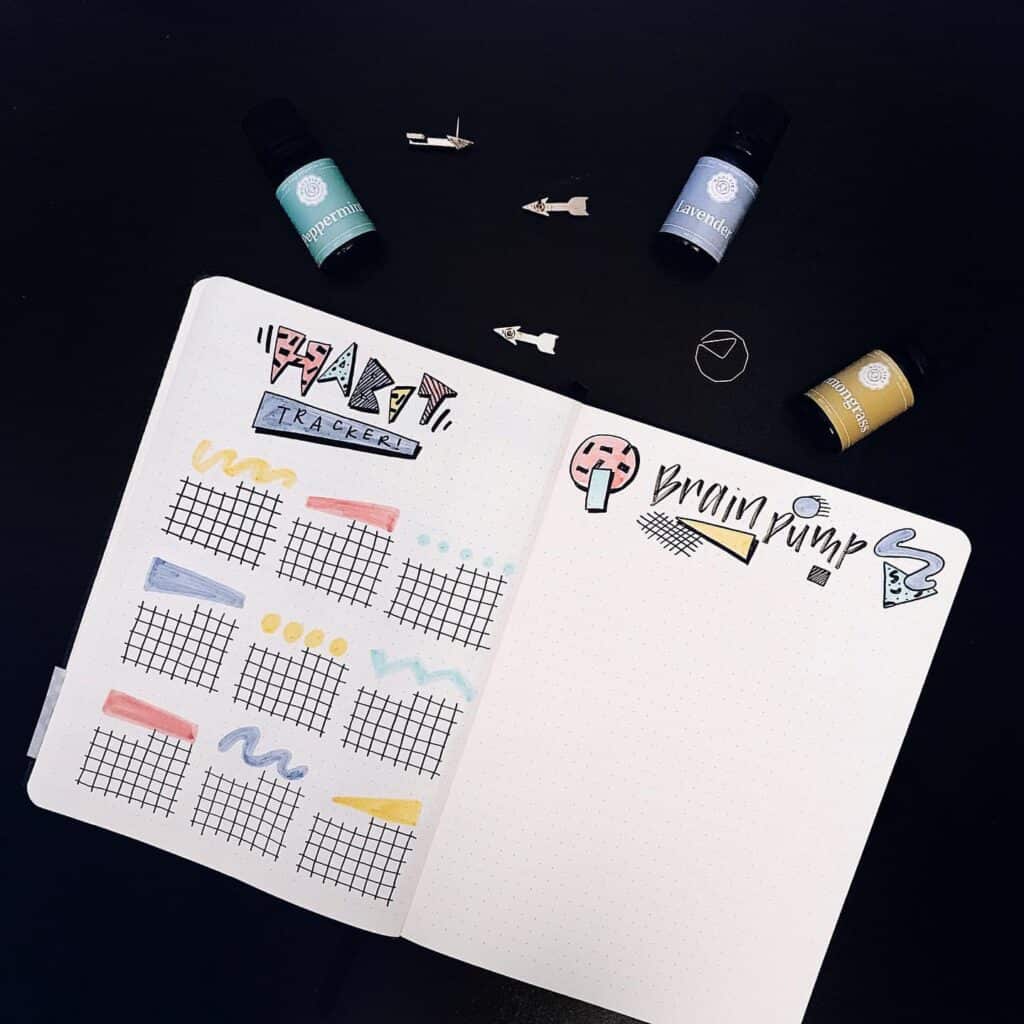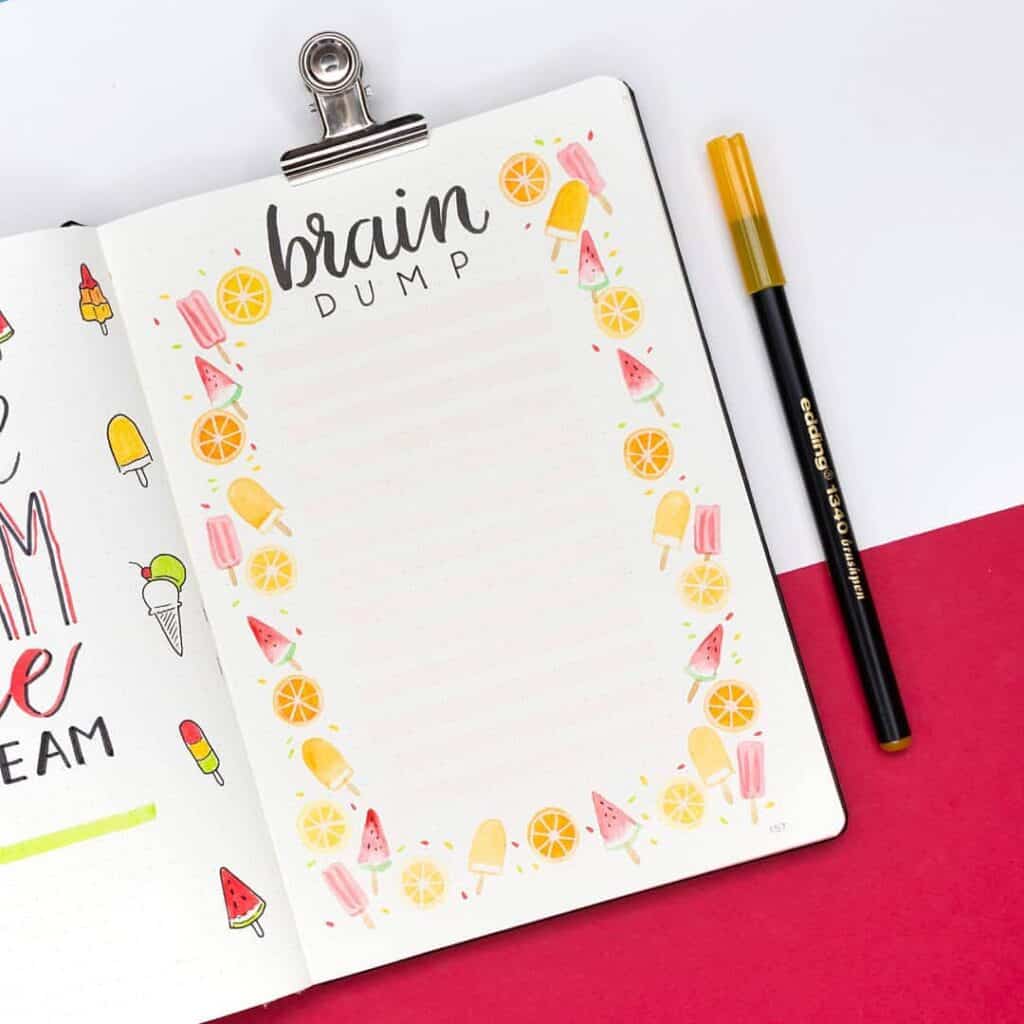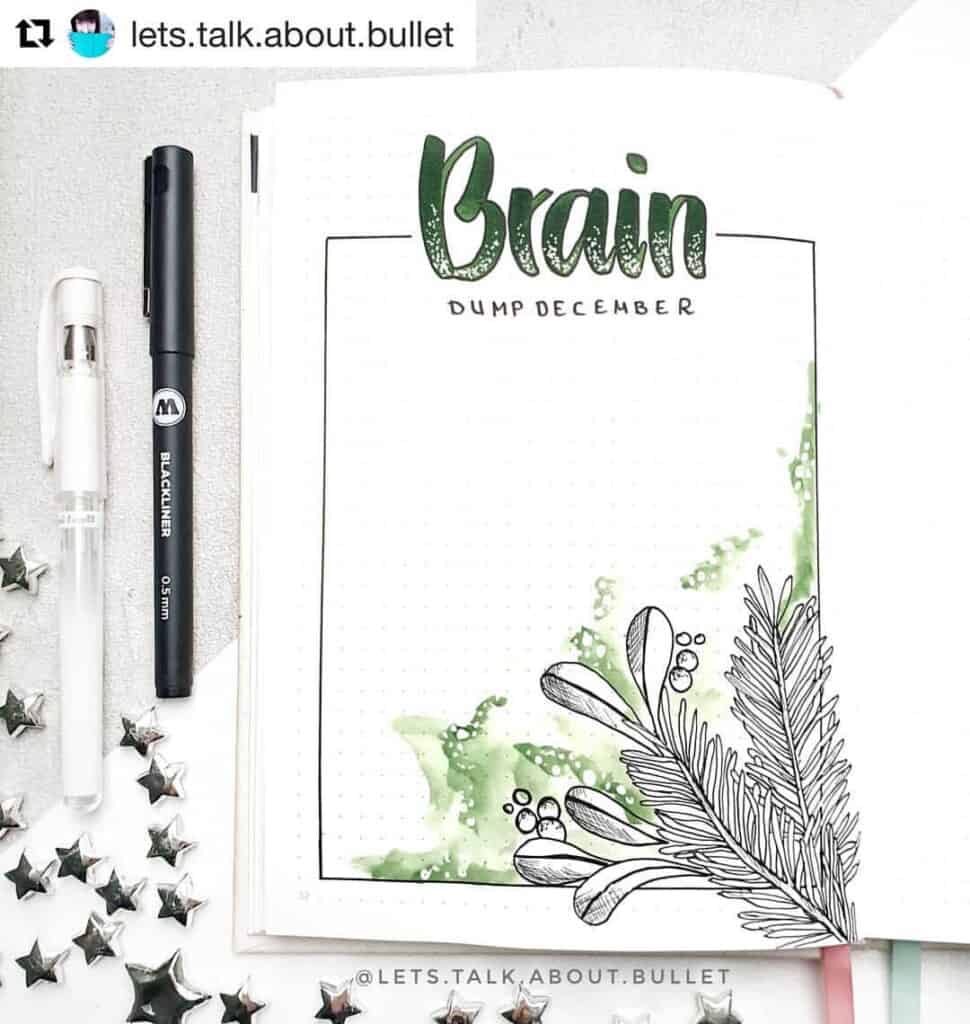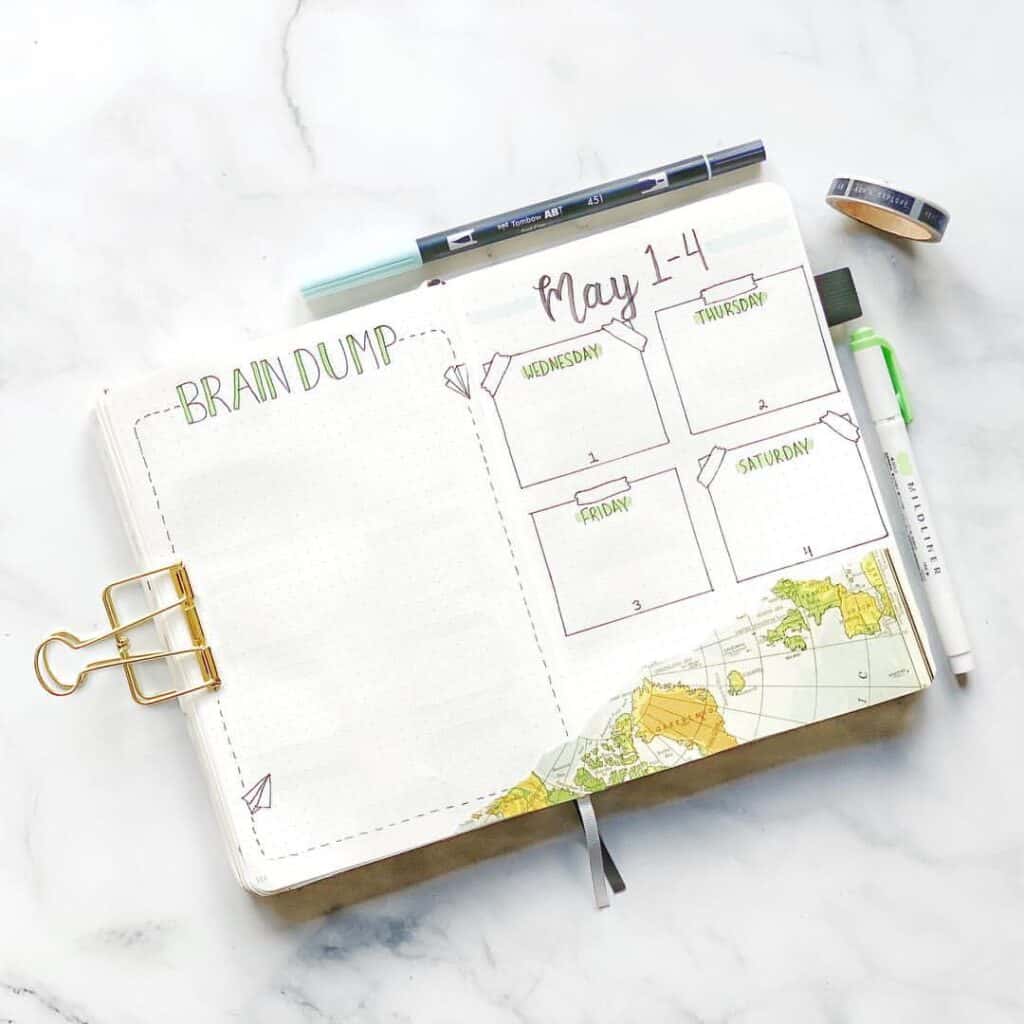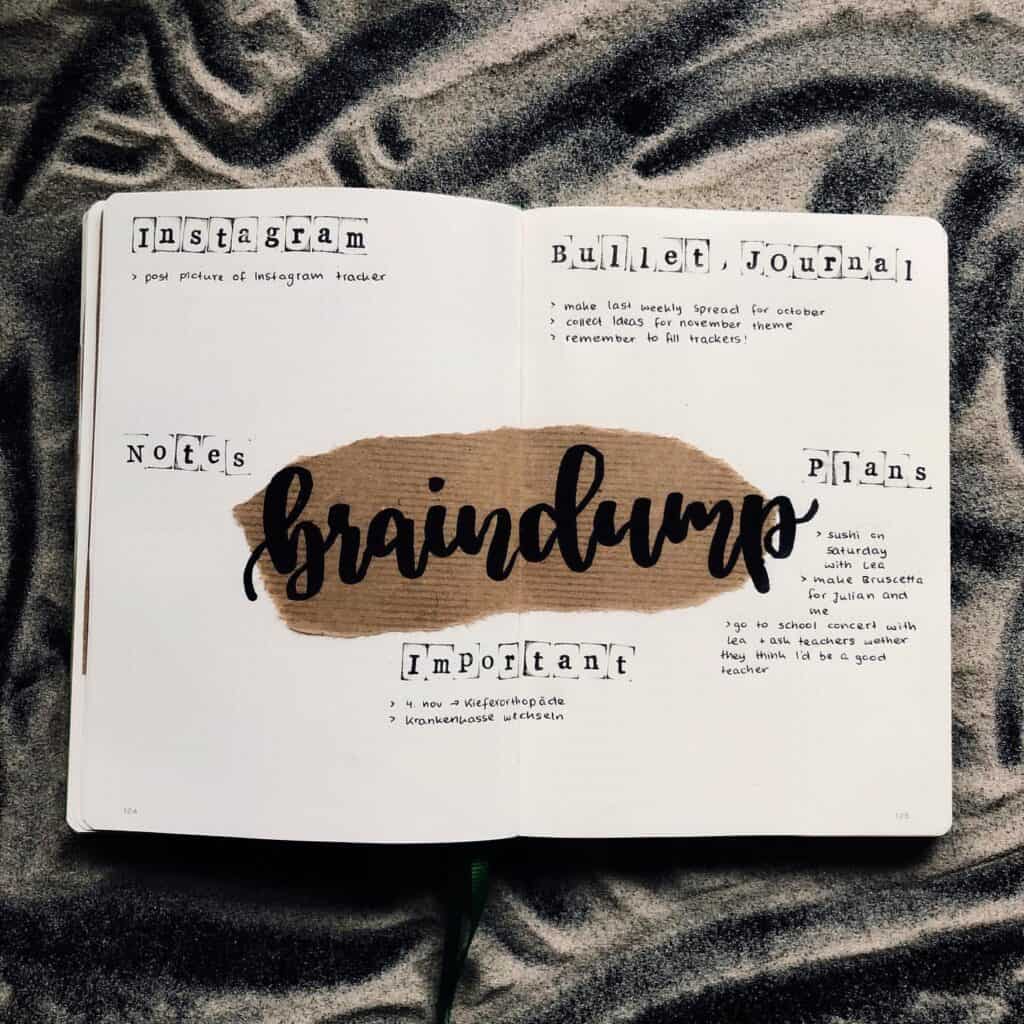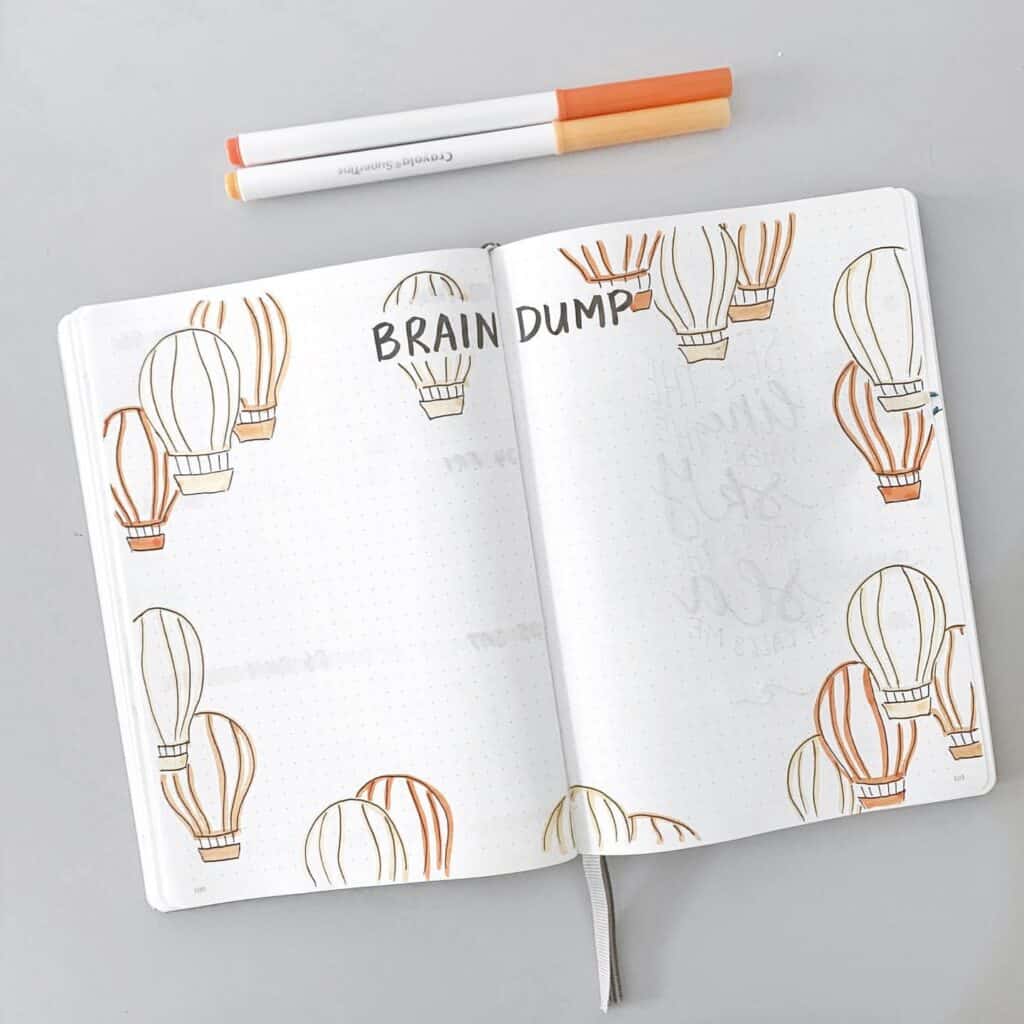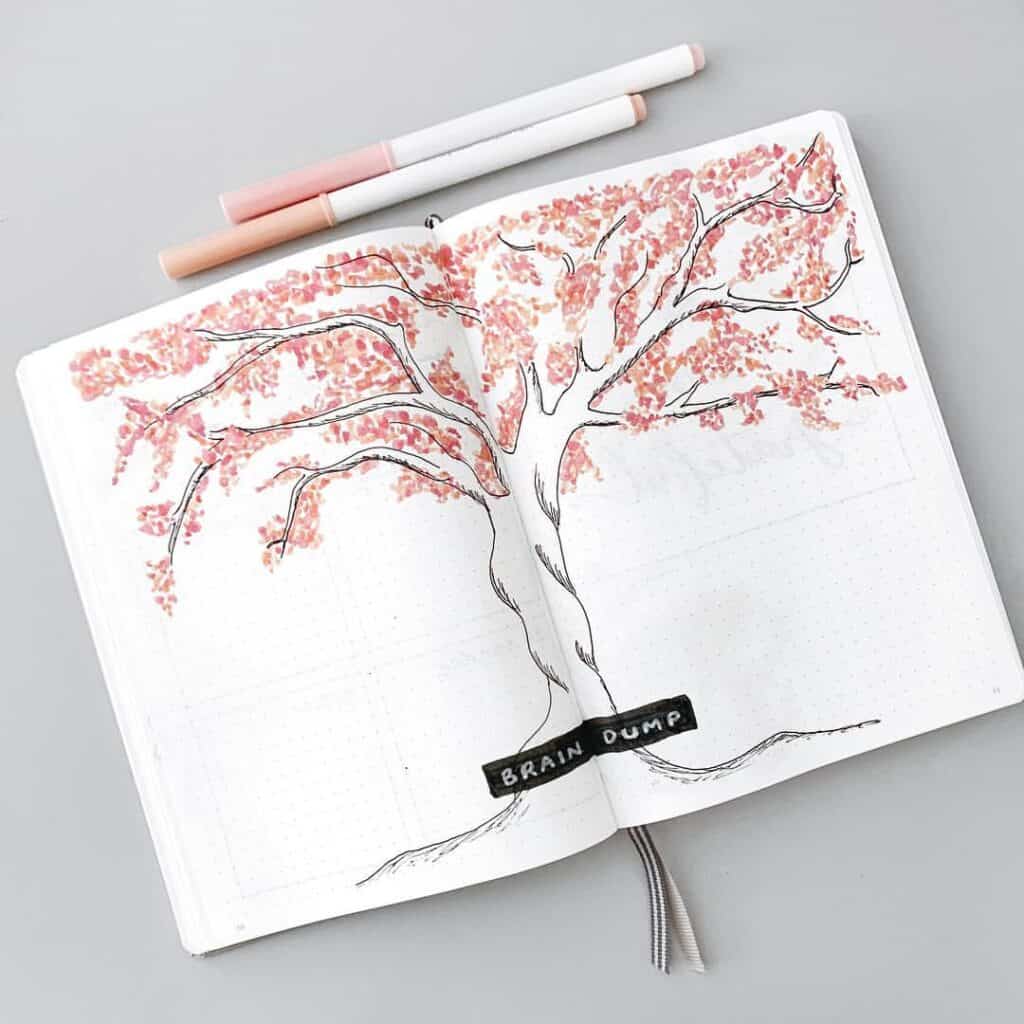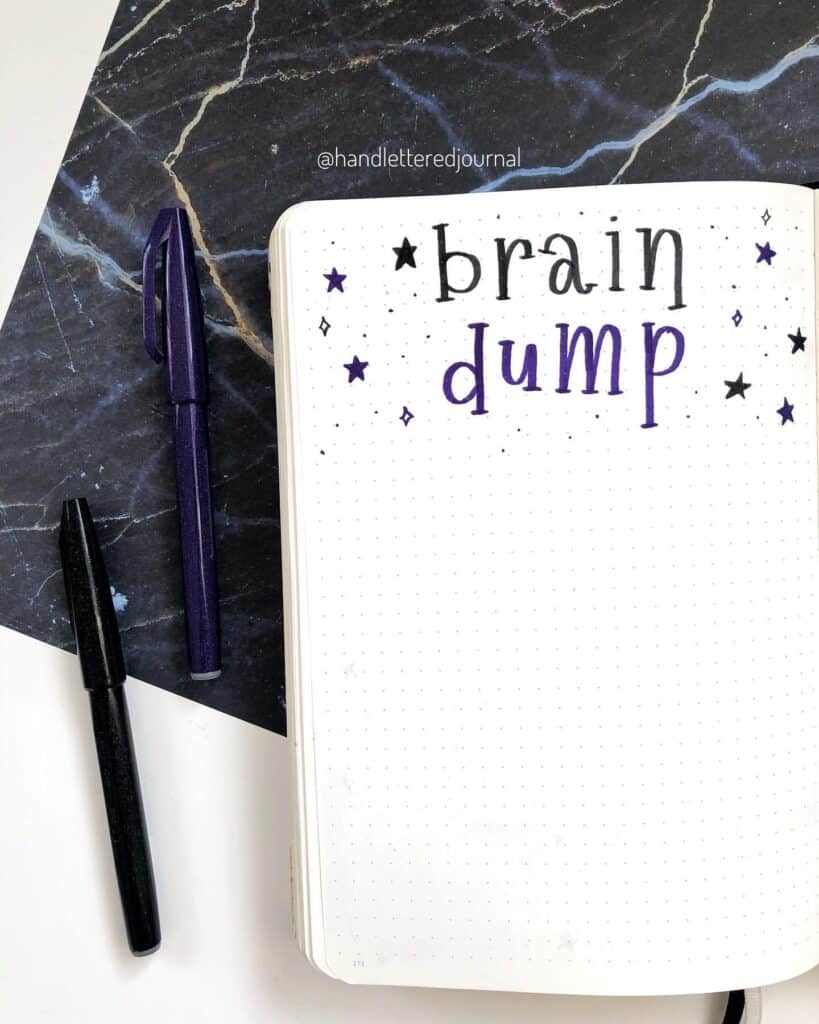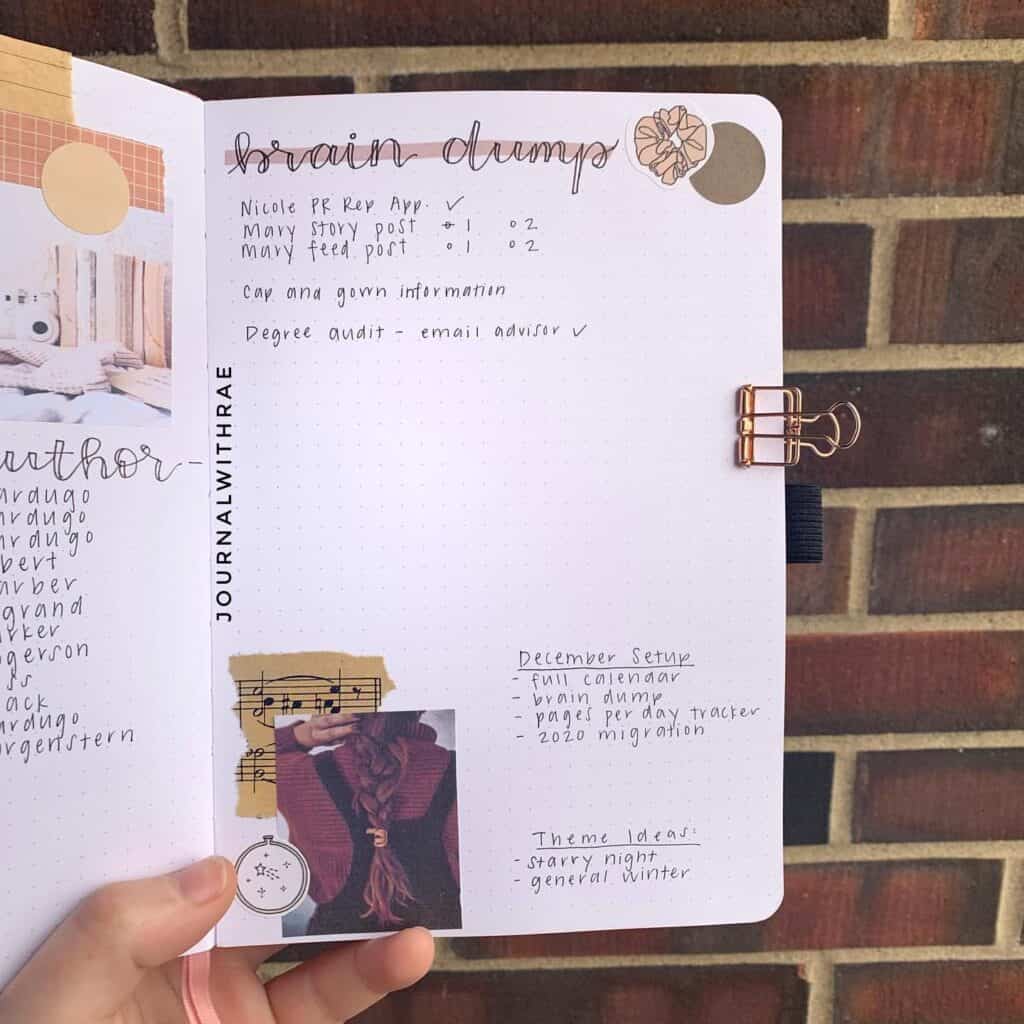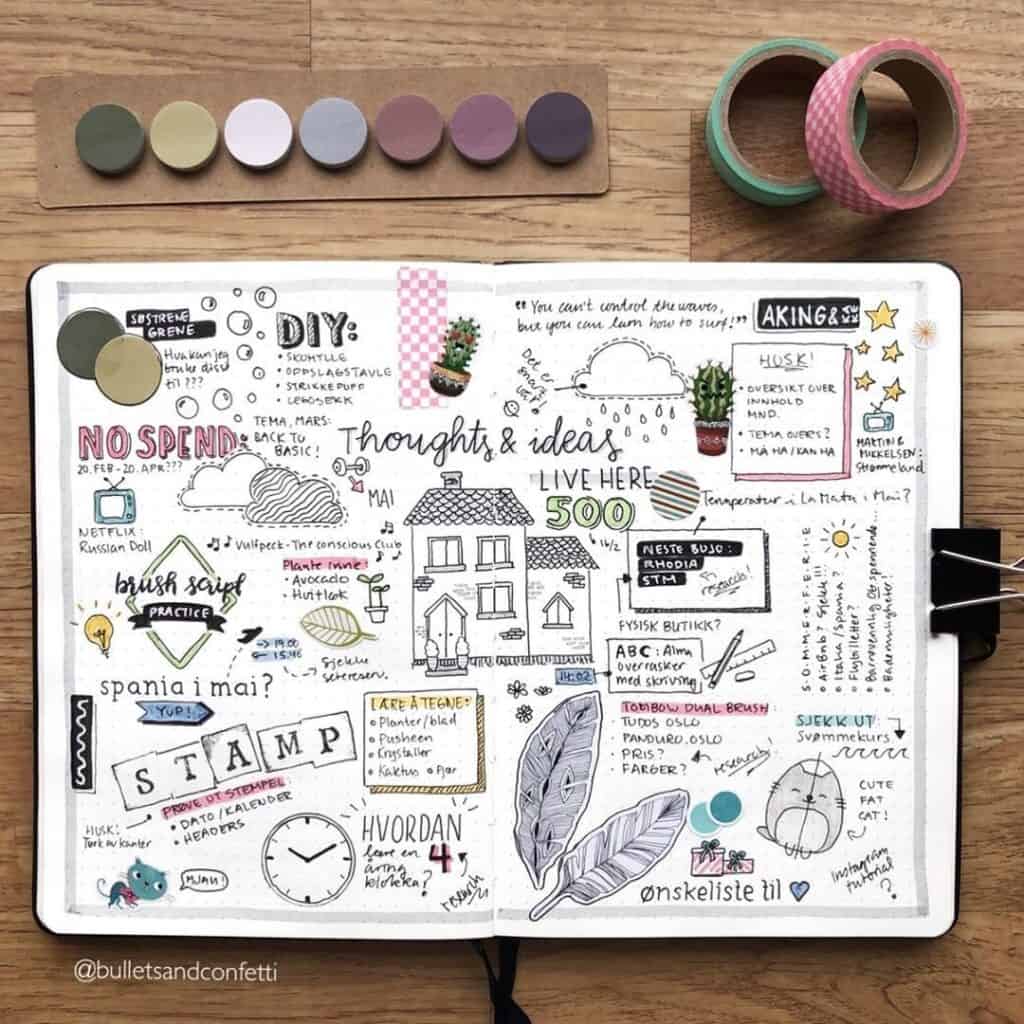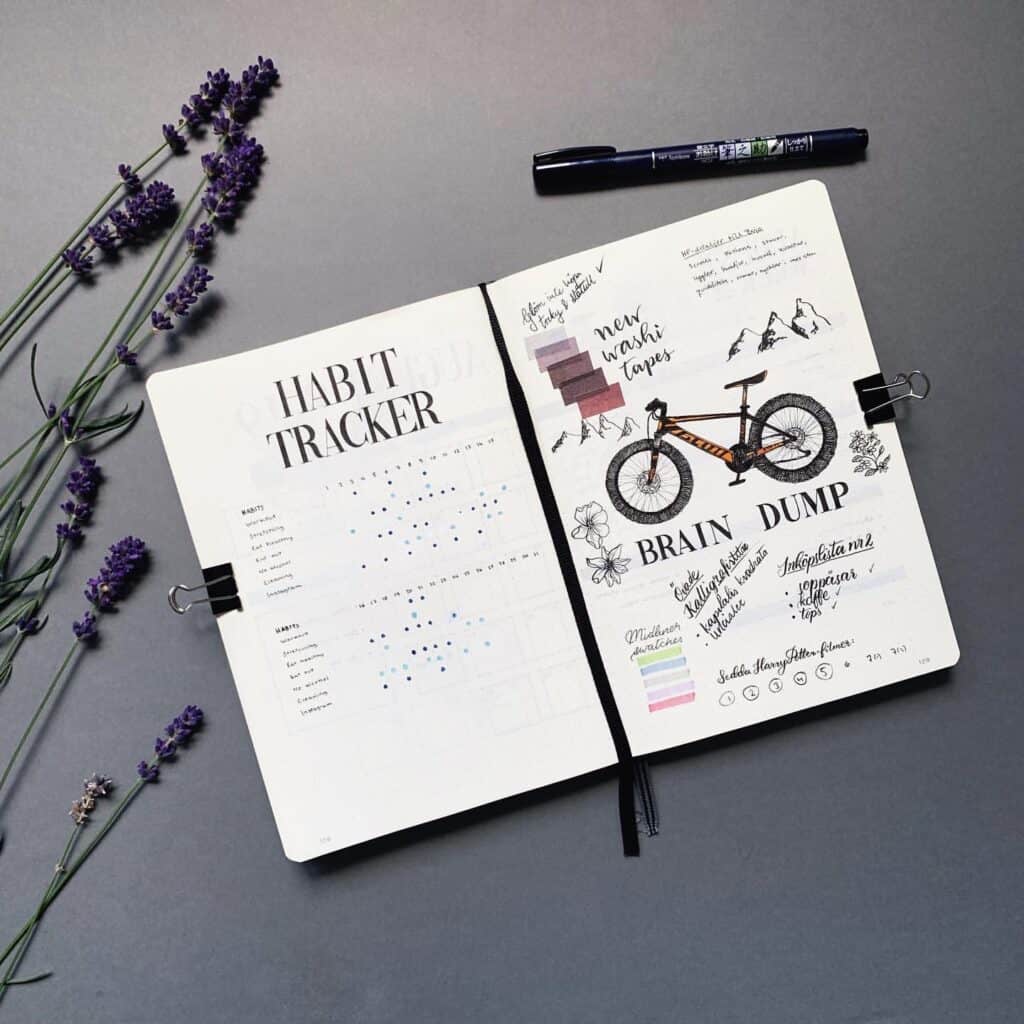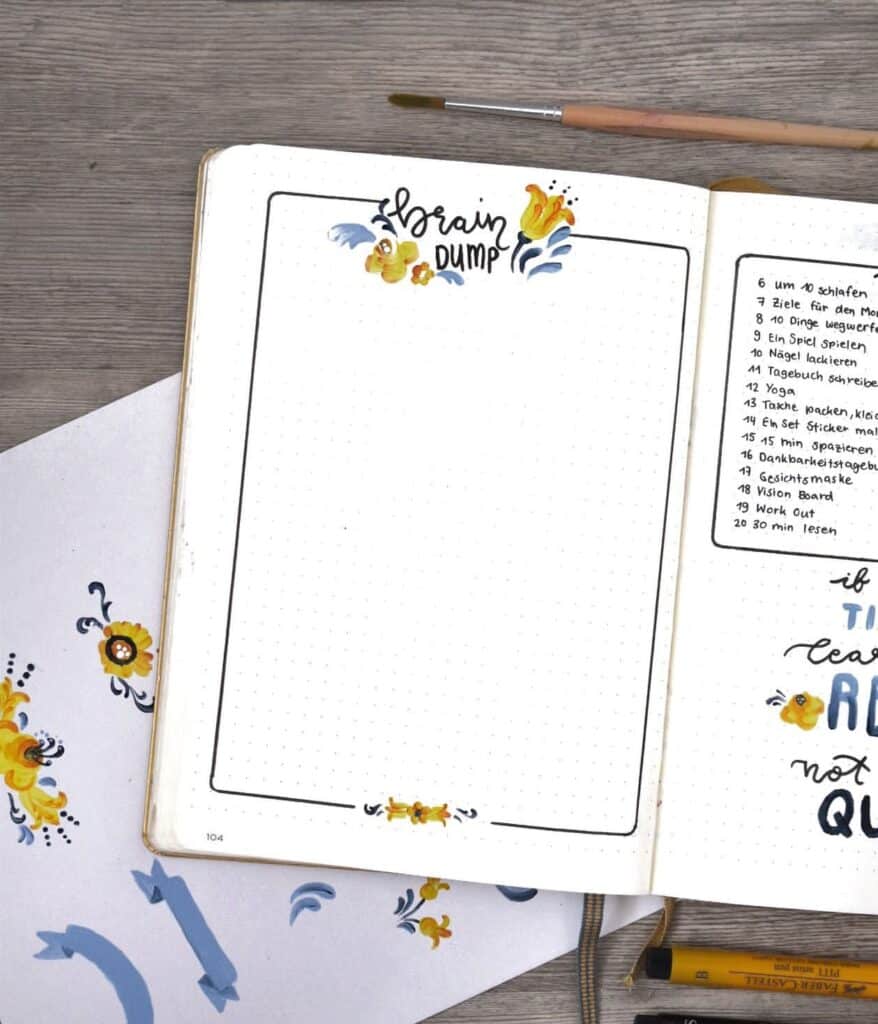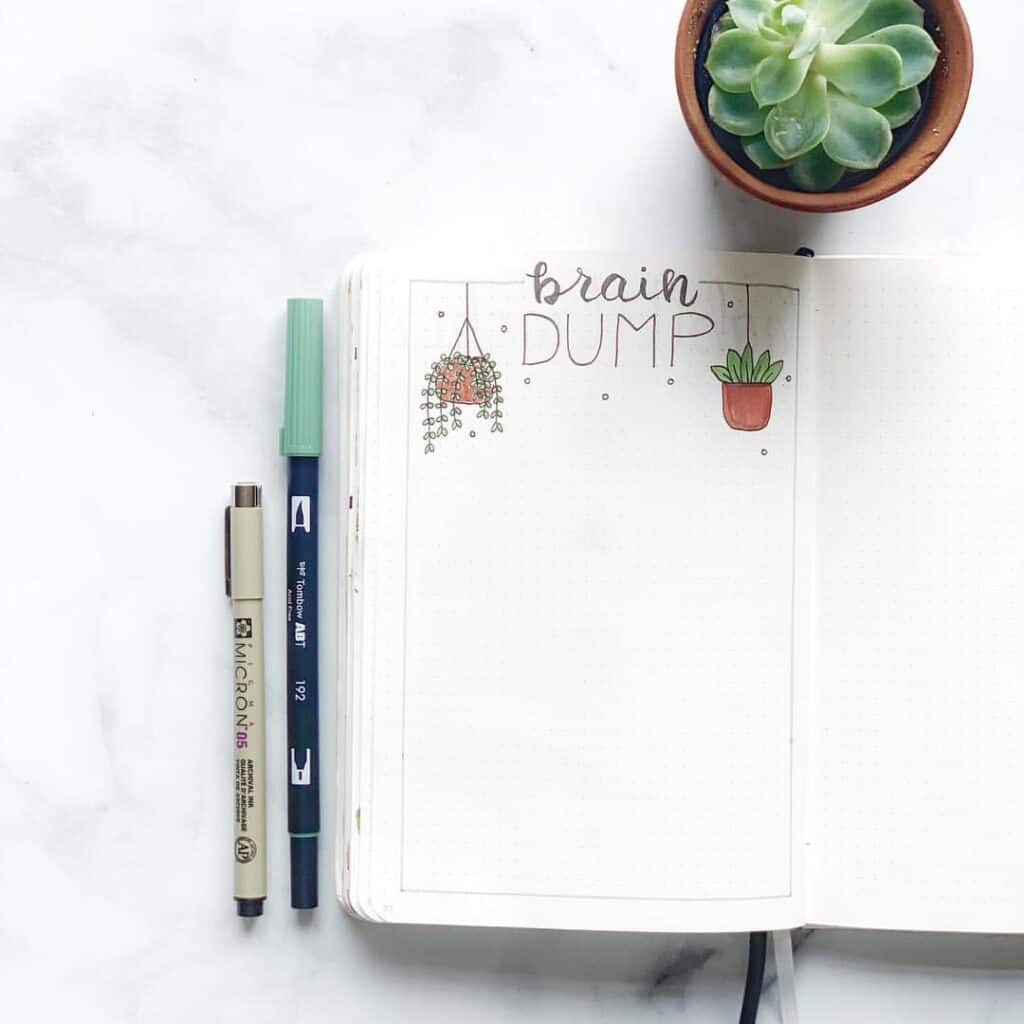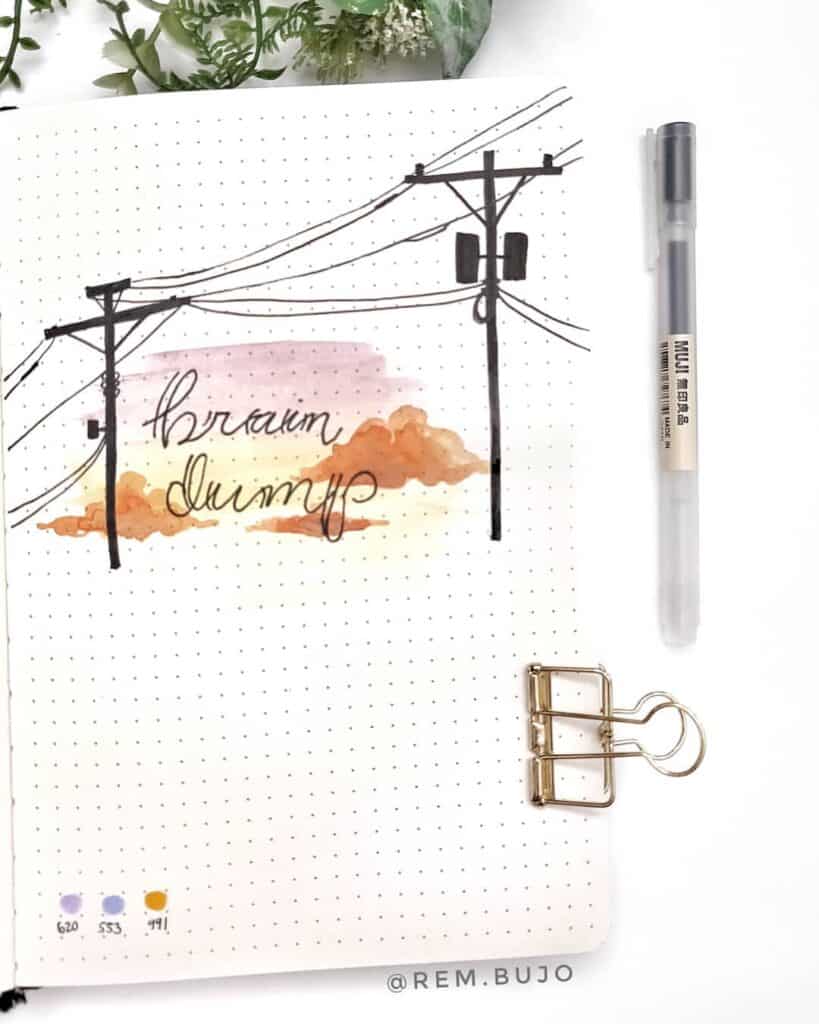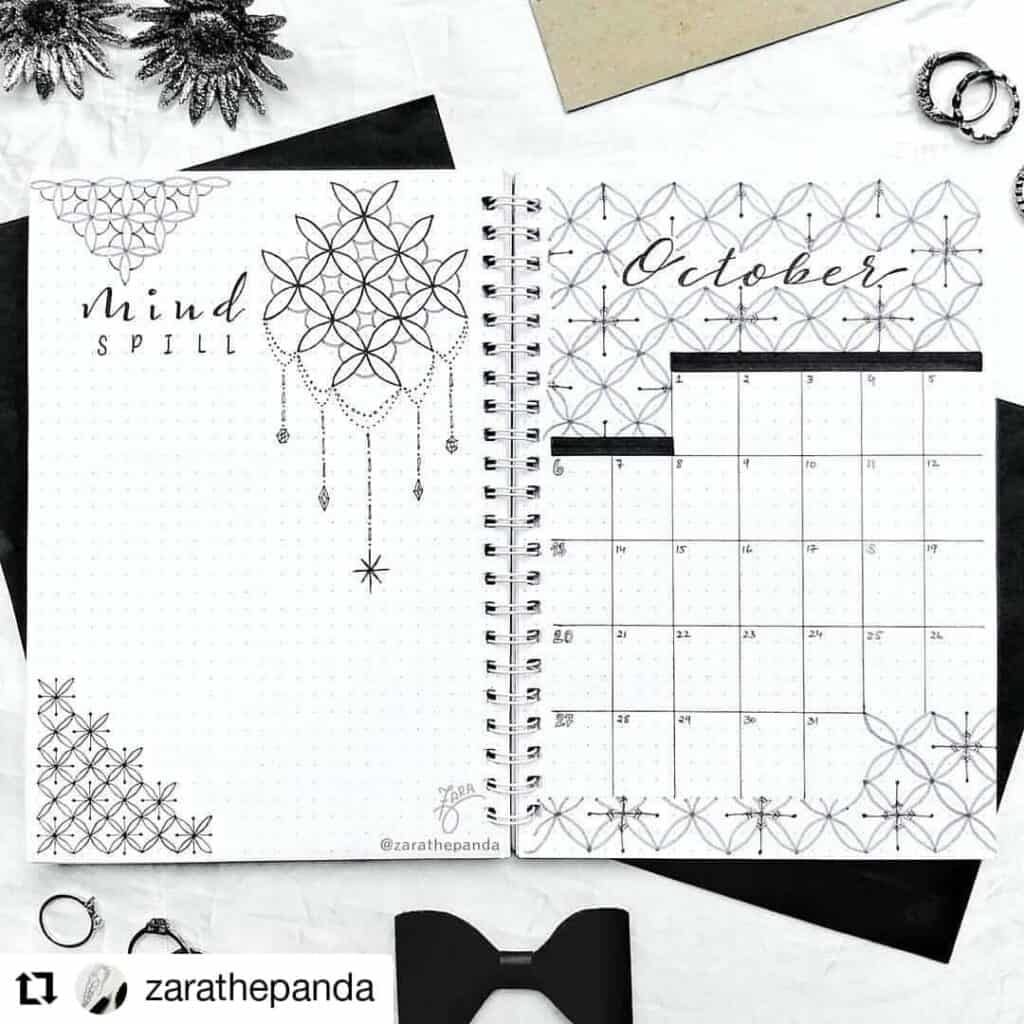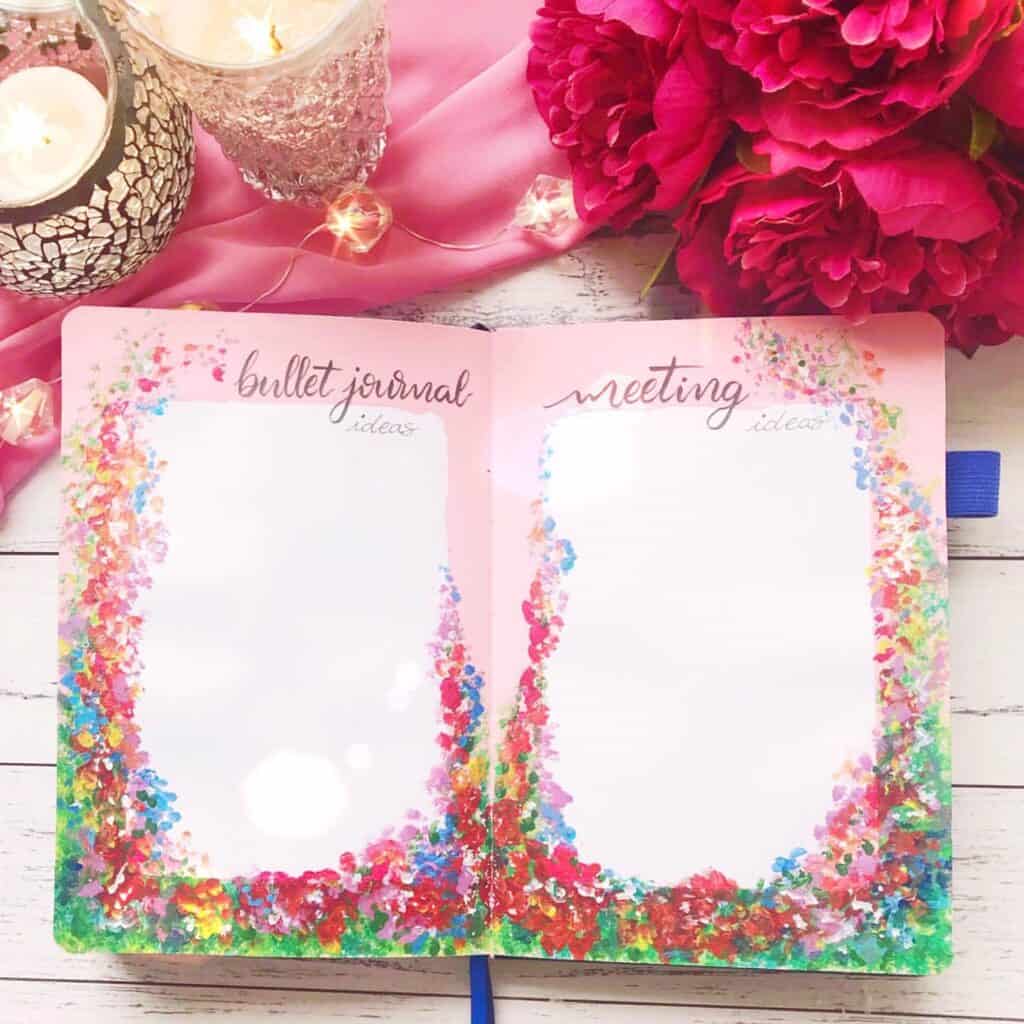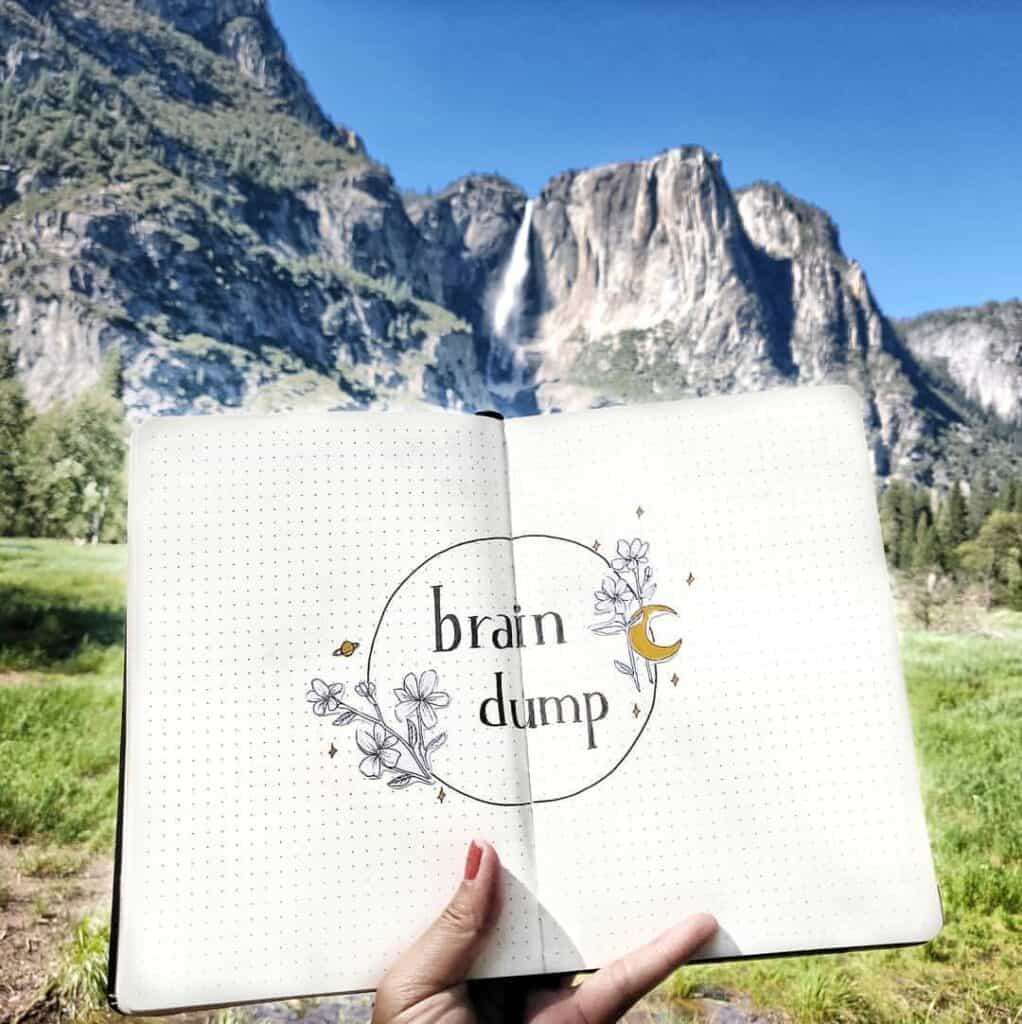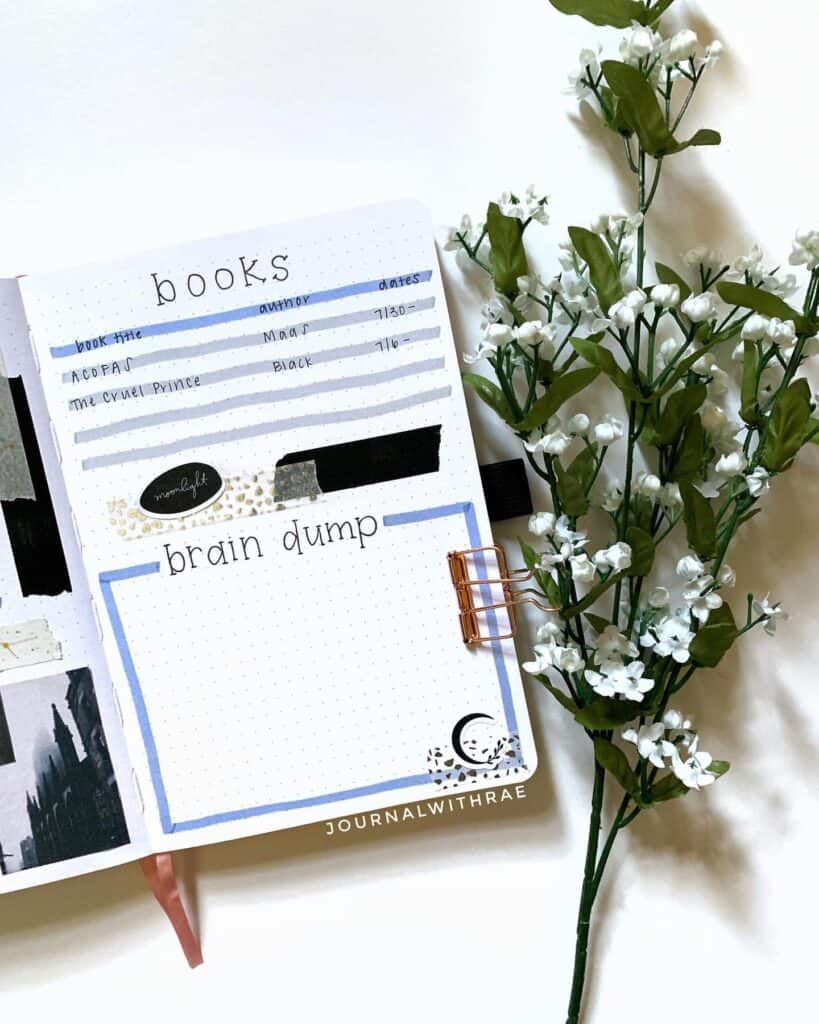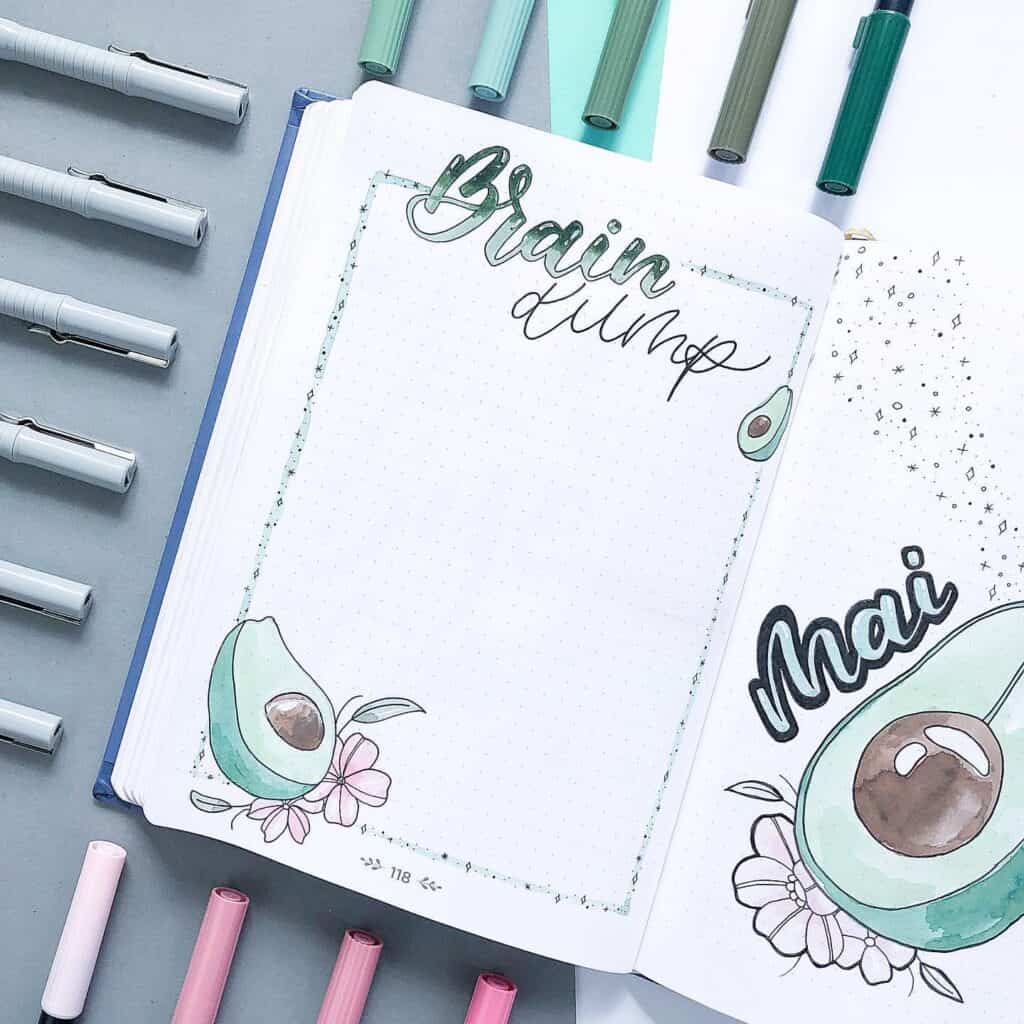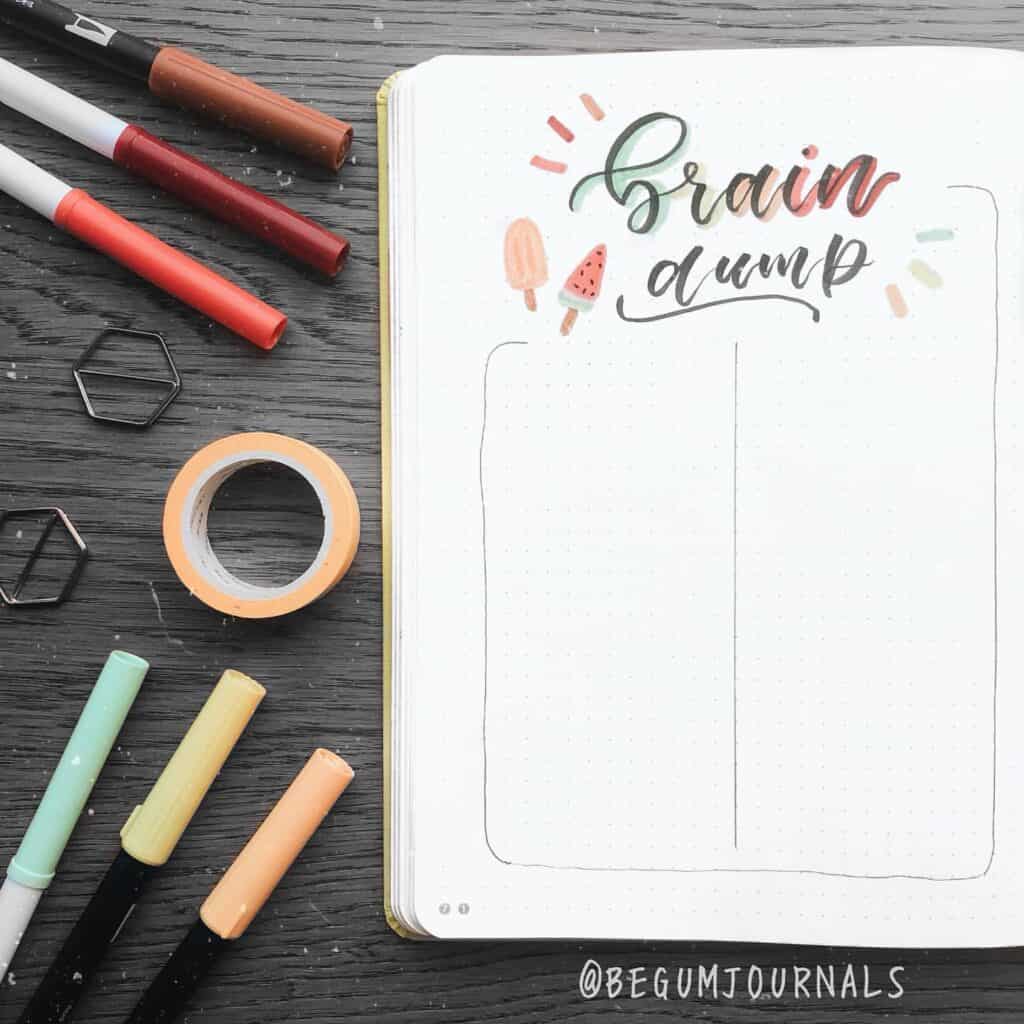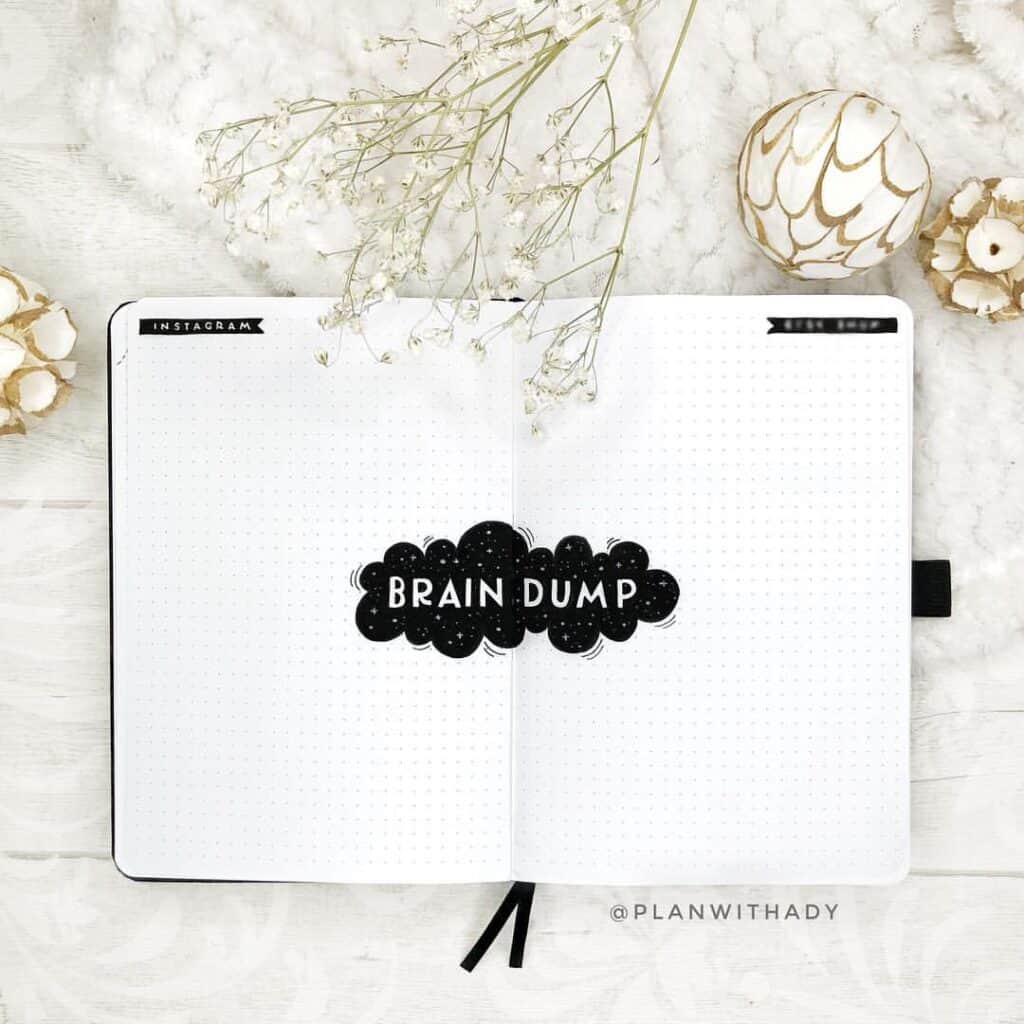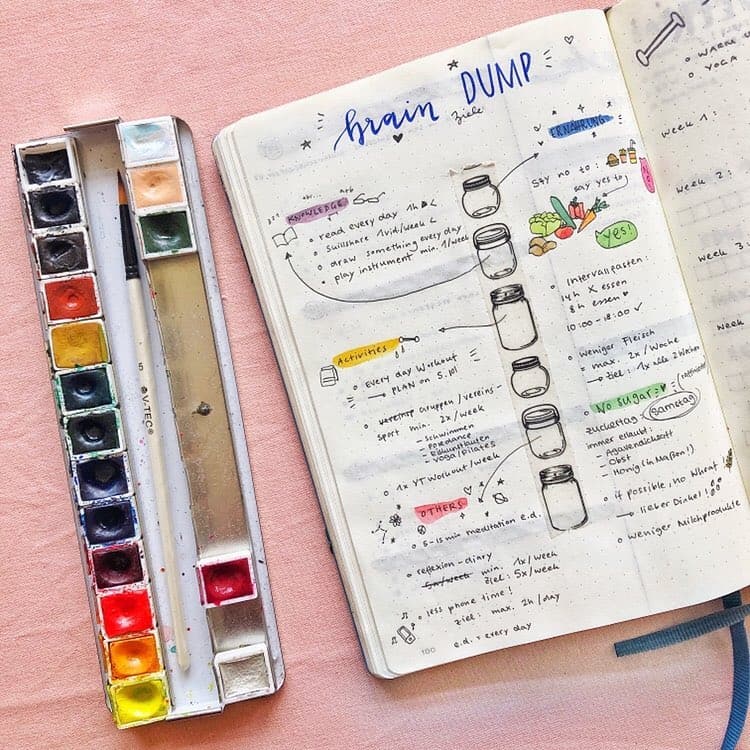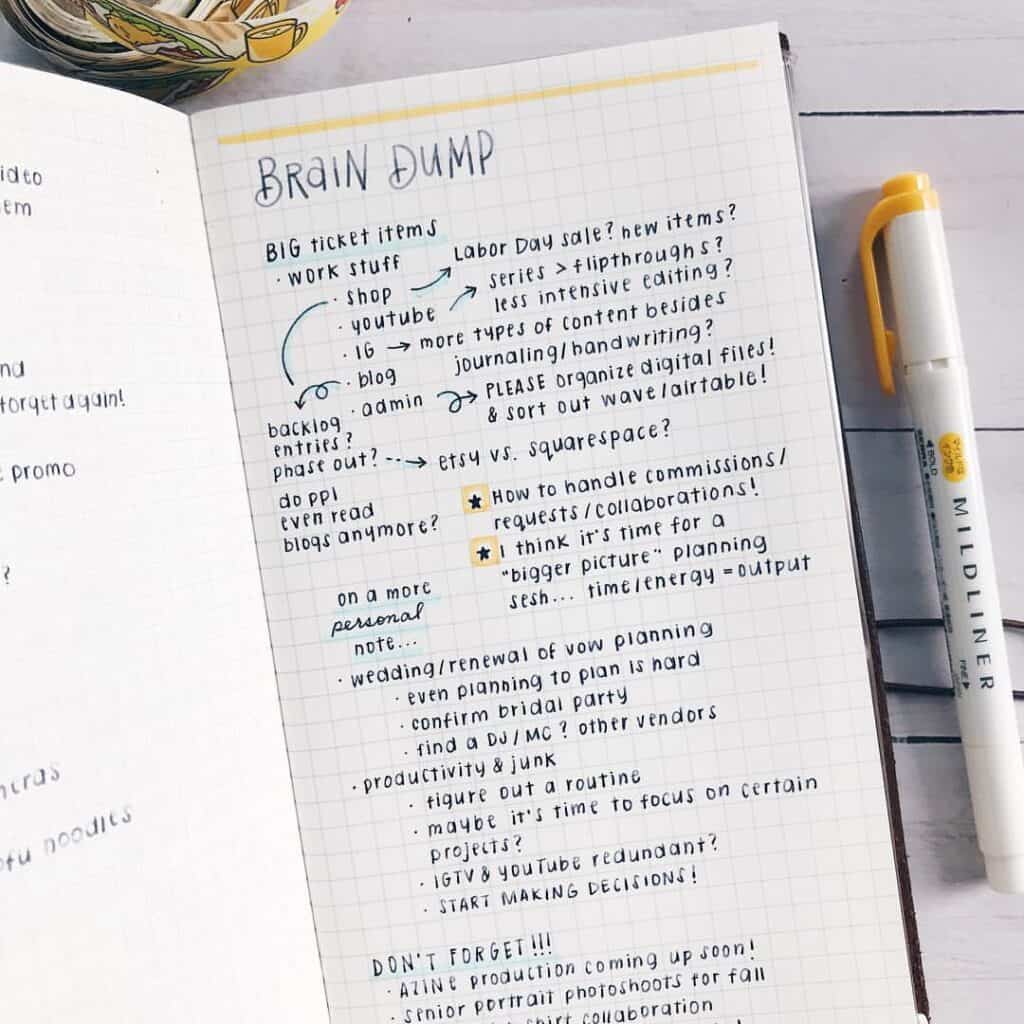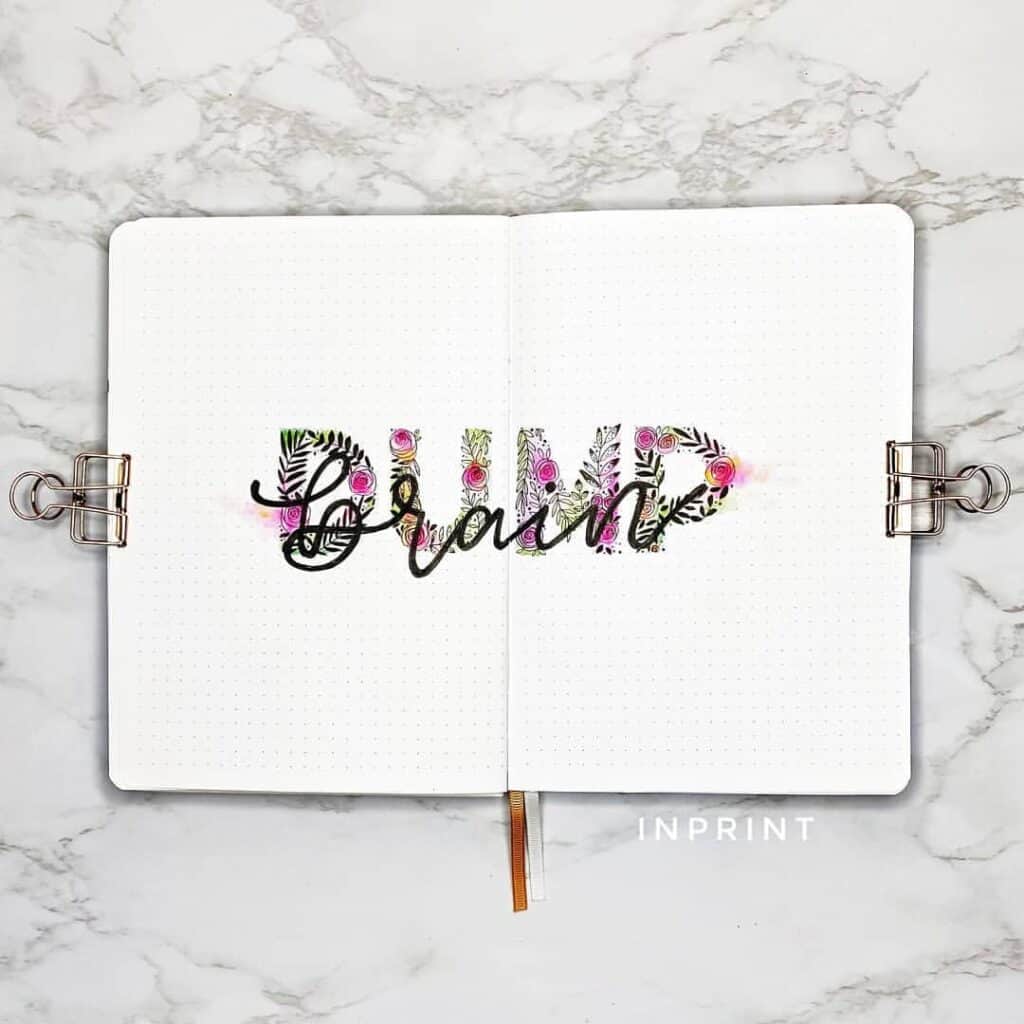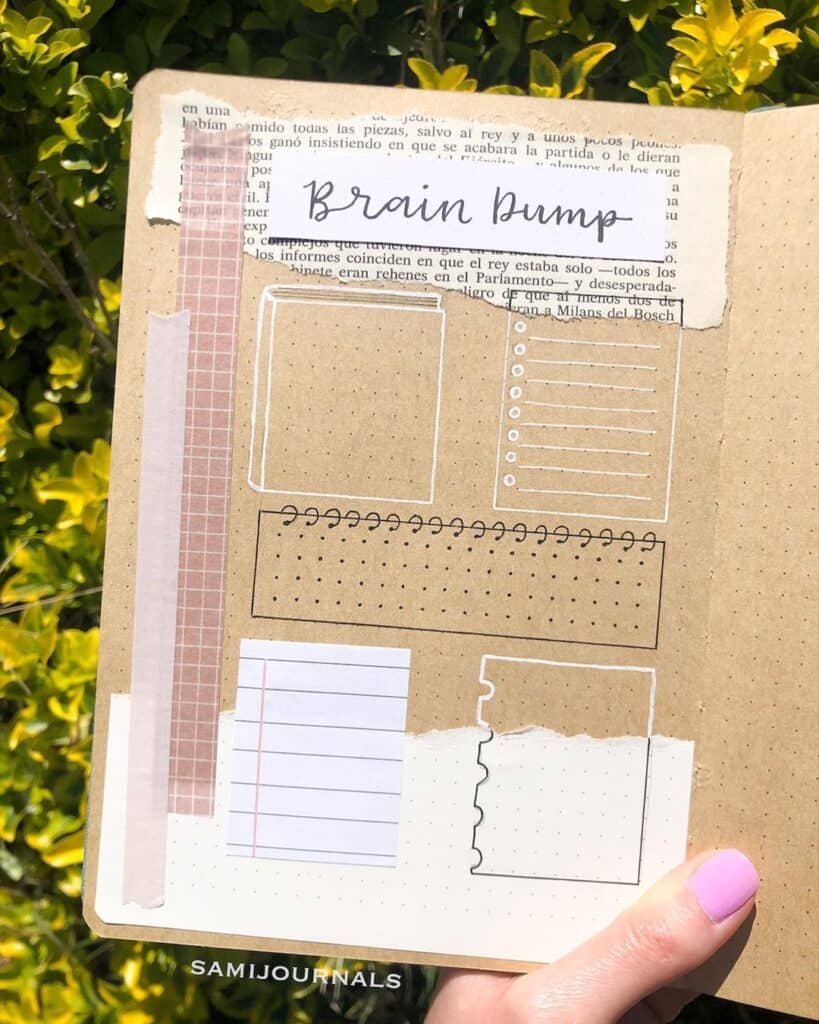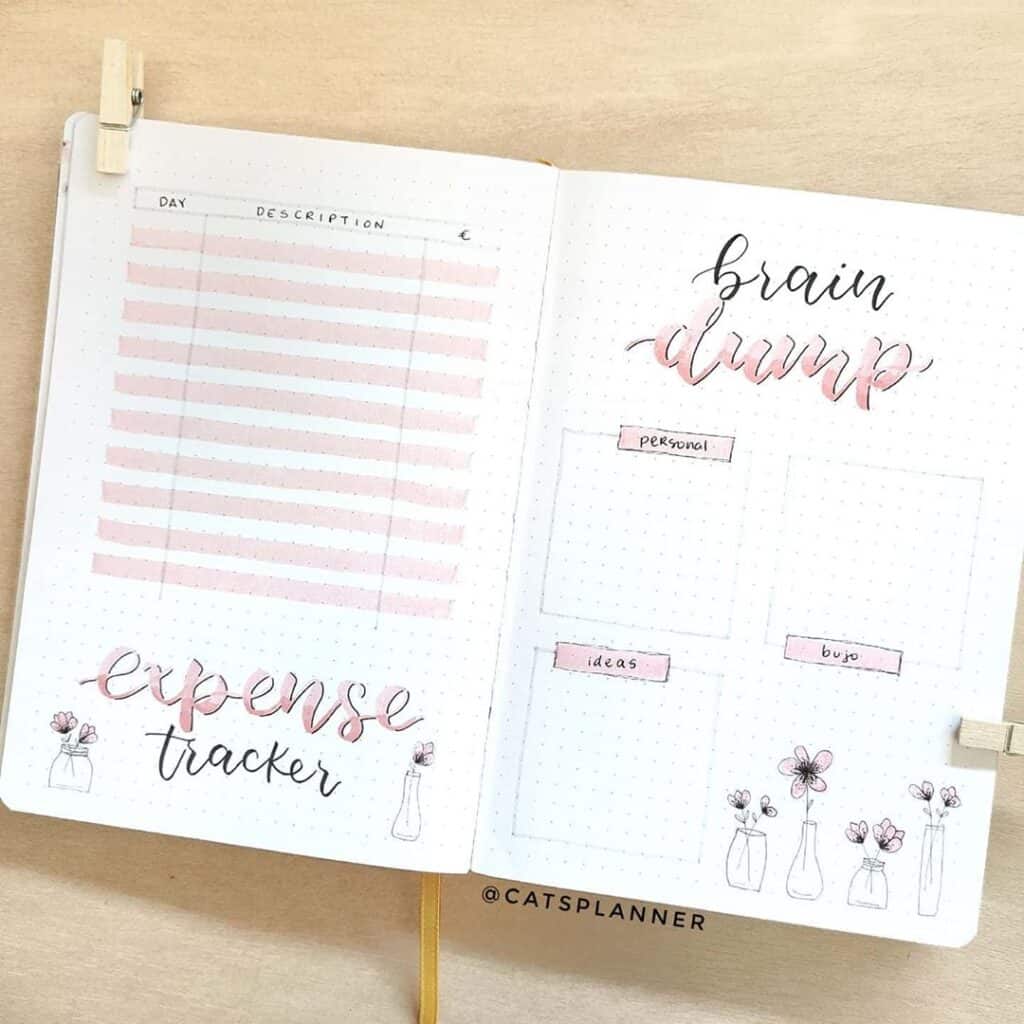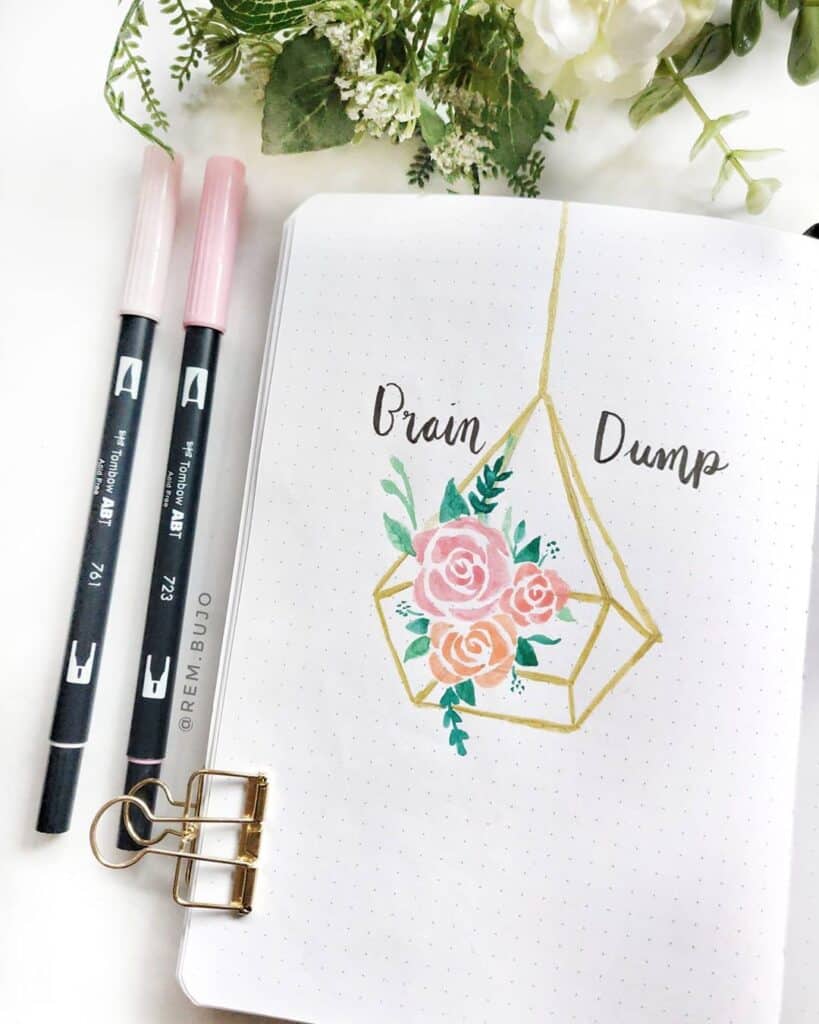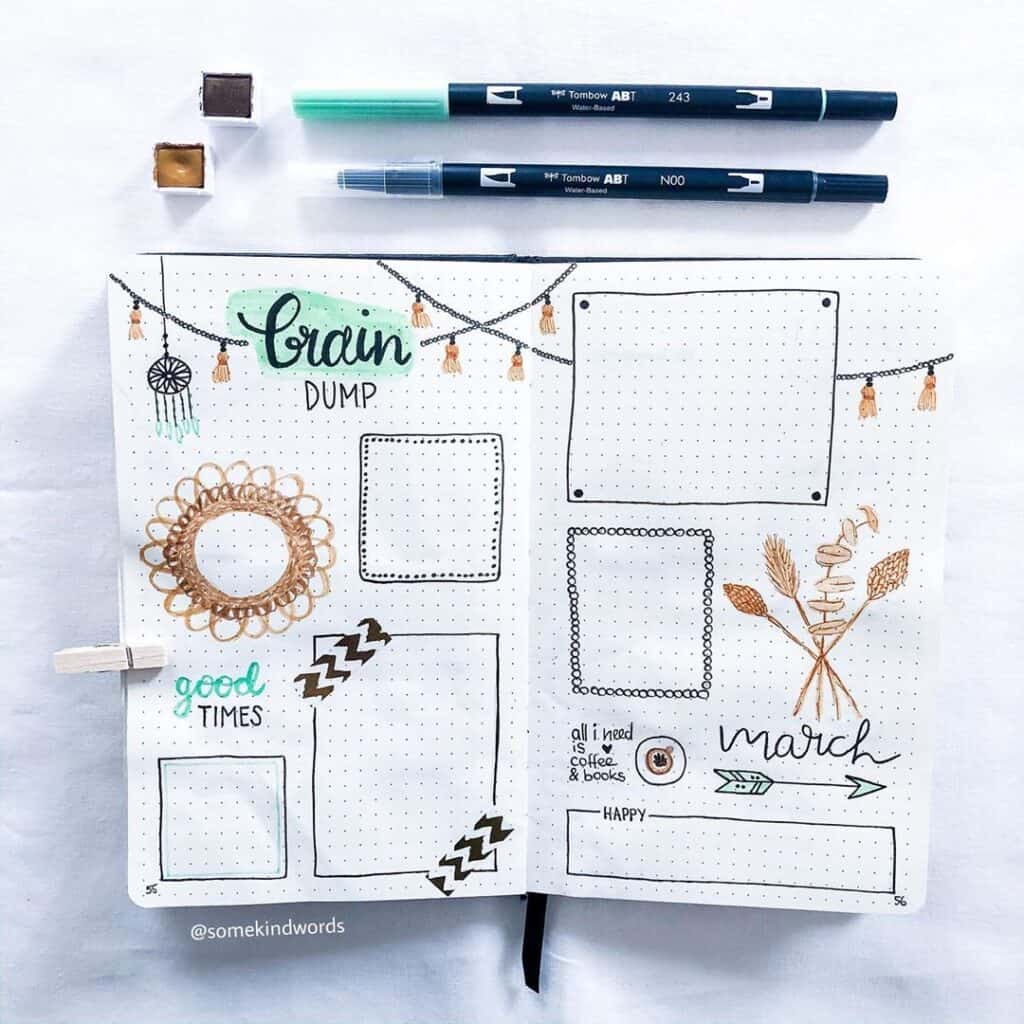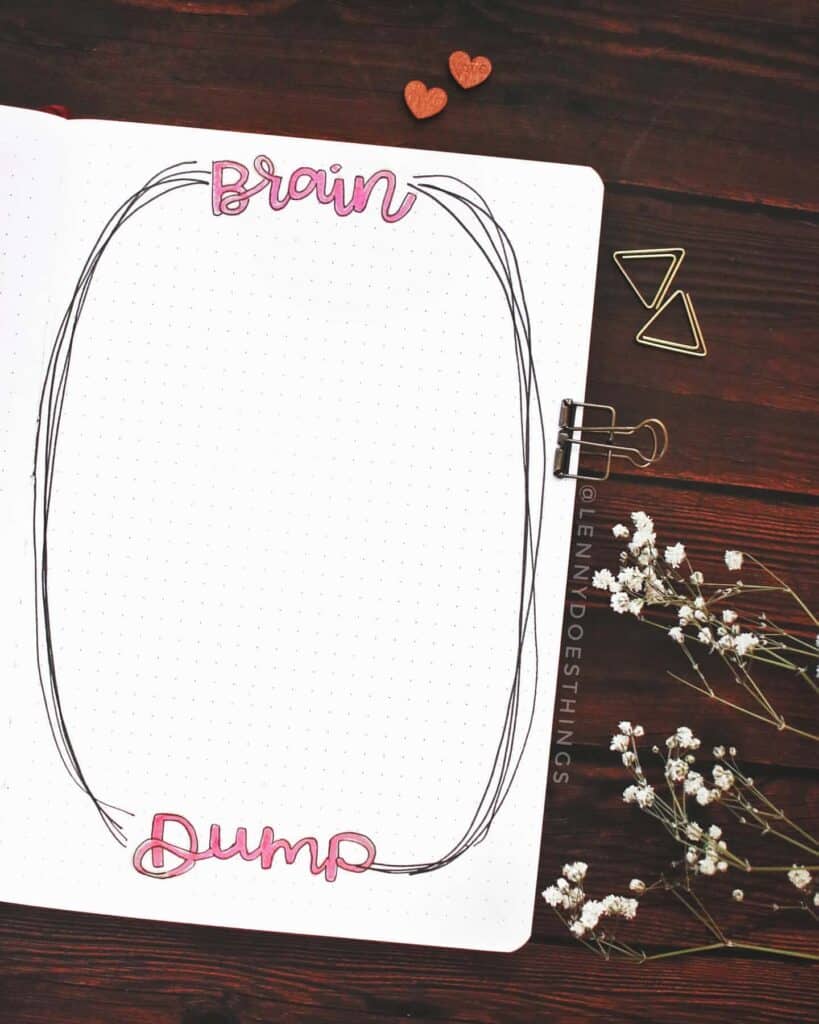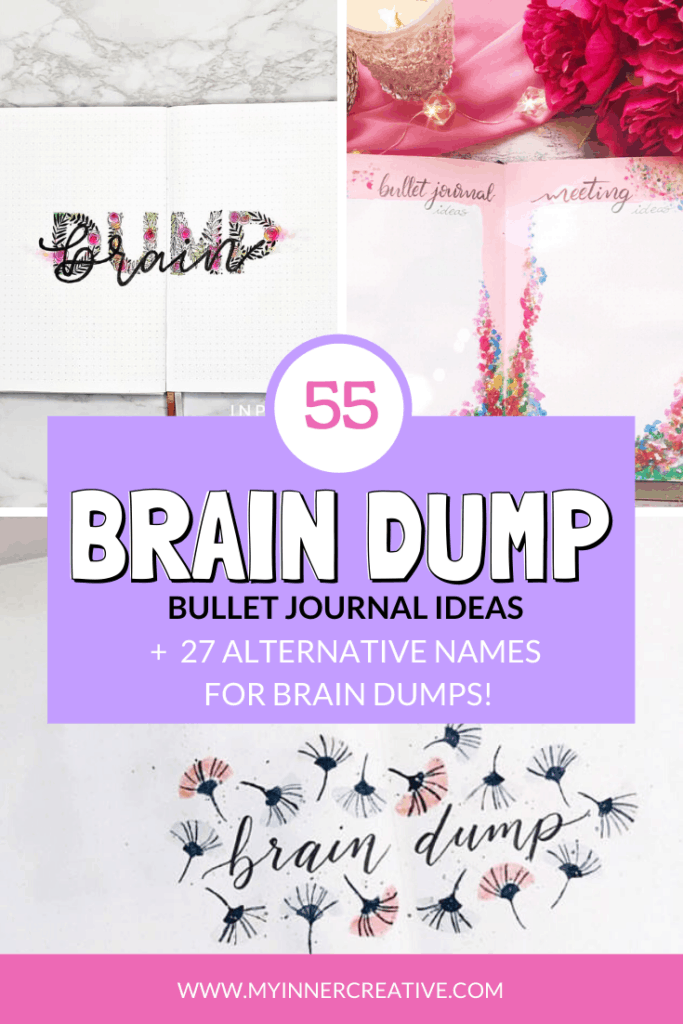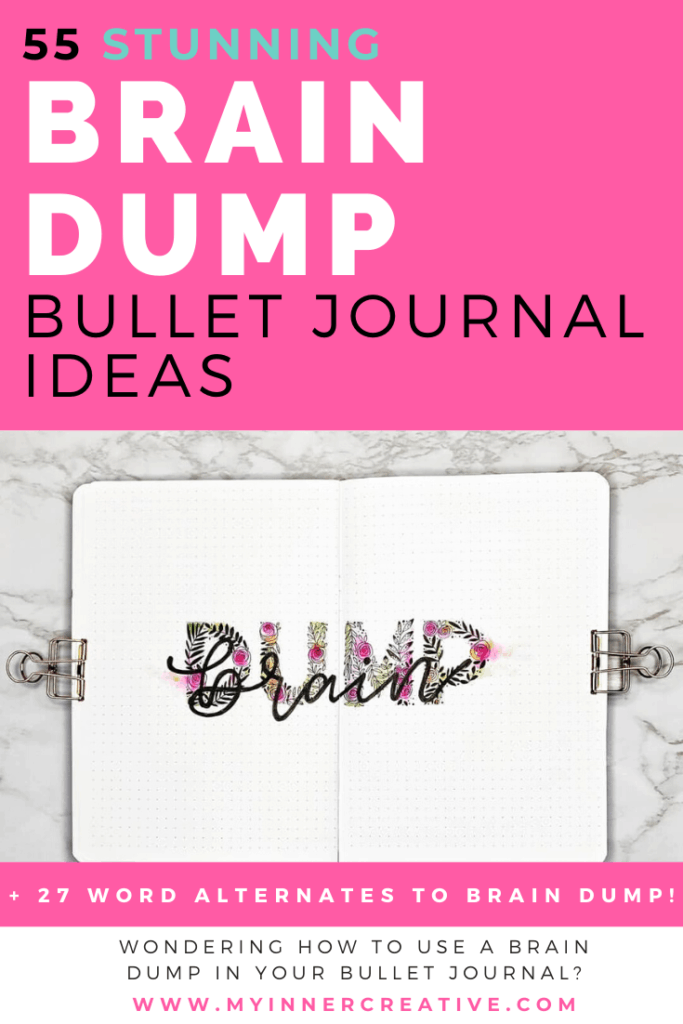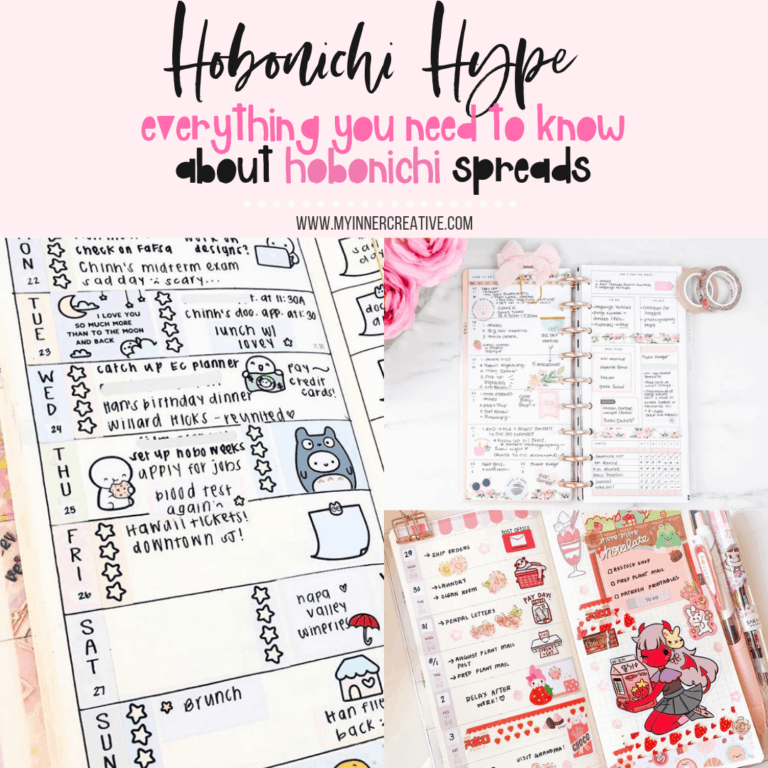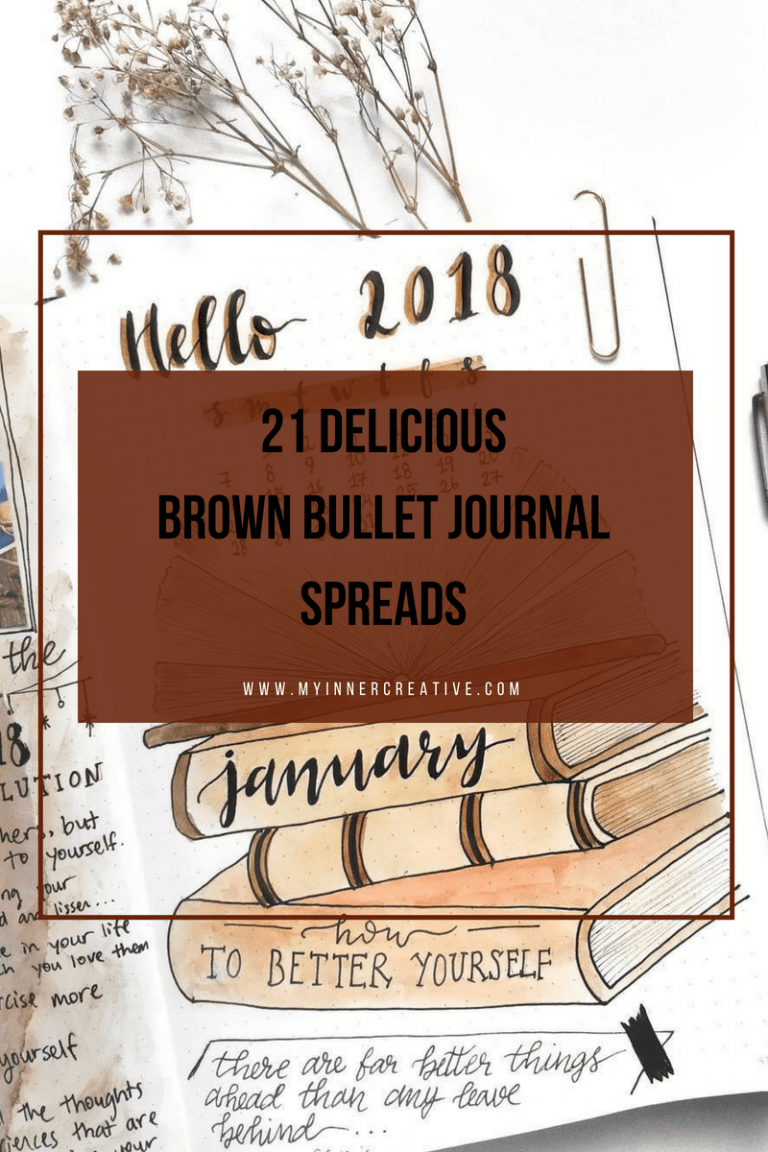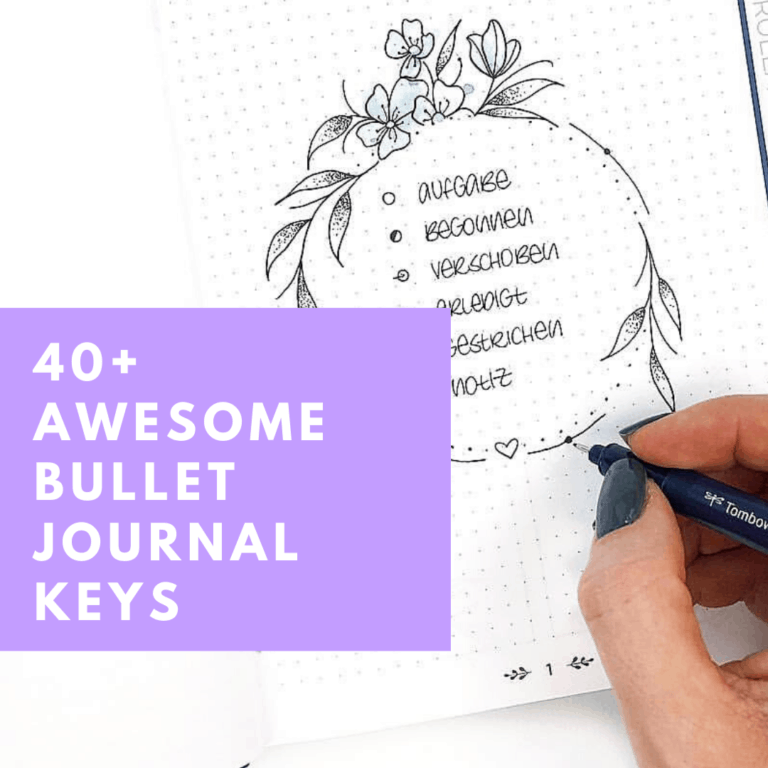Brain Dump in your Bullet Journal + 55 Inspirational ideas
In the digital age, where notifications constantly vie for our attention, it’s crucial to find a method to clear our minds and organize our thoughts effectively. Enter the world of bullet journaling—a versatile system that not only helps with task management but also serves as a powerful tool for brain dumps and brainstorming sessions. In this blog post, we’ll delve into the art of using a bullet journal for these purposes, focusing on the concept of a continuous stream of consciousness.
Have you seen Brain Dumps in bullet journals and wondered what they are? Well today we are talking about what a bullet journal brain dump is, other terms you can use for it if you don’t like the name, and finally we finish off with some gorgeous examples to inspire you!
Now if you are looking for other thought organising ideas, feel free to check out all the blog posts we have on organisation and productivity!
Talking about brain “dumps” might not be great for everyone, but fear not we have a ton of alternative words for the word brain dump to use in your bullet journal!
Check out this quick video for all the spreads!
1. Understanding Brain Dumps and Bullet Journaling:
Define Brain Dumps: Liberating Your Mind from Clutter
In our fast-paced world, the constant influx of information, tasks, and ideas can easily overwhelm our minds. This is where the concept of a brain dump comes in. Imagine your brain as a bustling city with traffic jams of thoughts and worries. A brain dump is like opening the floodgates and allowing all these mental vehicles to flow onto the paper. It’s a cathartic practice that involves jotting down anything and everything that crosses your mind without judgment or organization.
A brain dump is a valuable exercise for several reasons:
- Relieving Mental Load: As you transfer your thoughts from your mind to paper, you free up mental space, reducing anxiety and stress.
- Capturing Ideas: It’s common for brilliant ideas to fleetingly appear in our minds, only to be forgotten later. Brain dumps capture these gems before they vanish.
- Identifying Priorities: When your thoughts are laid out in front of you, it becomes easier to distinguish between urgent tasks, future plans, and trivial concerns.
Introduce Bullet Journaling: The Analog Swiss Army Knife
Now, let’s introduce the bullet journal—an ingenious system designed by Ryder Carroll that has gained immense popularity due to its versatility and adaptability. At its core, a bullet journal is a blank canvas in the form of a notebook that empowers you to create a personalized organization system. It’s not just a to-do list; it’s a place to track goals, jot down notes, draft schedules, and record reflections.
The basic elements of a bullet journal include:
- Rapid Logging: The backbone of bullet journaling, rapid logging involves using simple symbols to represent tasks, events, and notes.
- Collections: These are thematic groupings of related information, like a book wish list, travel plans, or project ideas.
- Index: The index makes navigating your journal easy, allowing you to find specific entries without flipping through pages.
Highlighting the Synergy: A Dynamic Duo for Mind Management
The beauty of integrating brain dumps with bullet journaling lies in their synergistic relationship. Bullet journaling provides structure and organization to the sometimes chaotic nature of brain dumps. When you unleash your thoughts onto the pages of your journal, you can then categorize and prioritize them using bullet journal techniques. This synergy enhances your creative thinking and problem-solving abilities.
Here’s how the synergy works:
- Tangible Organization: The bullet journal’s index, page numbering, and collections provide a method to catalog and reference your brain dump entries. This turns your chaotic thoughts into a structured resource.
- Actionable Insights: After a brain dump, you can review your thoughts, identify patterns, and extract actionable steps. These can then be incorporated into your bullet journal’s task lists and collections.
- Mental Clarity: The act of transferring your thoughts onto paper during a brain dump reduces mental clutter, allowing you to approach bullet journaling with a clearer mind. This leads to more effective planning and reflection.
In essence, the union of brain dumps and bullet journaling empowers you to declutter your mind, organize your thoughts, and nurture your creative thinking. It transforms your journal into a dynamic tool for not only managing tasks but also exploring the depths of your ideas and aspirations. As you embark on this journey, remember that there are no strict rules—adapt these techniques to suit your unique style and needs.
What is a Bullet Journal Brain Dump?
A brain dump is where you put all the thoughts that just pop into your mind. It could be on a daily basis or a monthly basis. What I have seen often is people use it as a monthly bullet journal spread or collection.
Collect your thoughts into a bullet journal collection of thoughts!
Nicola from My Inner Creative
The brain dump is also really a connection or collection of thoughts on a specific topic that you have not had time to sort though yet. Using a brain dump might help you sort through those thoughts.
It can be a really simple bullet journal with just the title of the topic you are thinking though, or even the words “brain dump”. OR it can be a more complex “mind-map” style spread that lays out the thought process in detail.
2. Getting Started with Brain Dumps:
Setting the Stage: Creating a Mindful Environment
Before you embark on your brain dump journey, it’s essential to set the stage for a conducive and distraction-free experience. Finding a quiet and comfortable space can greatly impact the quality of your brain dump. Consider these steps:
- Minimize Distractions: Choose a space where you can detach from digital devices, notifications, and other potential interruptions.
- Comfort is Key: Sit in a comfortable chair or cushion with proper lighting to reduce physical discomfort during the brain dump.
- Relaxation Techniques: Spend a few moments practicing deep breathing or meditation to calm your mind and focus your thoughts.
Choosing Your Tools: The Right Gear for the Job
The tools you select for your brain dump session can influence the fluidity of your thoughts and the overall experience. When it comes to tools, think simplicity and personal preference:
- Selecting a Journal: Opt for a journal that you feel a connection with. The texture, size, and paper quality should resonate with you.
- Pens that Flow: Choose pens or markers that glide smoothly on the paper, allowing your thoughts to pour out effortlessly. Different colors can add a touch of creativity to your brain dump.
Setting a Time Limit: Embrace the Power of Constraints
While the goal of a brain dump is to free your mind from constraints, setting a time limit paradoxically enhances creativity and prevents overthinking:
- Allocate a Specific Time: Decide on a reasonable timeframe for your brain dump session. This could be 5, 10, or 15 minutes, depending on your comfort level.
- Preventing Overthinking: A time limit encourages you to bypass your inner critic and embrace spontaneity. The constraint compels you to write down thoughts as they come, without excessive rumination.
Writing Freely: Embrace the “No Rules” Mindset
The heart of a successful brain dump lies in allowing your thoughts to flow onto the paper without inhibition or structure:
- No Self-Censorship: Avoid filtering your thoughts. Even if an idea seems strange or unrelated, jot it down anyway. These seemingly random ideas can later trigger insightful connections.
- Mindful Observance: Instead of actively seeking specific ideas, observe your stream of consciousness. Your brain will naturally gravitate towards thoughts that hold significance to you.
Embracing Messiness: Authenticity Over Perfection
A brain dump is not meant to be a perfectly polished piece of writing. Embrace the messiness and spontaneity that come with the process:
- Disregard Neatness: Don’t worry about your handwriting or formatting. The goal is to capture your thoughts authentically, regardless of their appearance on the page.
- Visual Chaos: Allow your brain dump to resemble a visual representation of your thought process—a mix of scribbles, arrows, doodles, and words.
Remember that the beauty of a brain dump lies in its rawness and authenticity. By setting the stage, choosing the right tools, and adopting a free-spirited mindset, you’ll unlock the power of your thoughts, leading to a decluttered mind and newfound insights. As you practice brain dumps over time, you’ll find that the process becomes more fluid and natural, allowing you to tap into your creativity and inner wisdom.
Why should I use a brain dump?
You really don’t need a specific reason to use a brain dump, its personal preference and may work for you in your bullet journal or not.
It is however a great way to clear your mind of thoughts that you may not have categorised yet or thought through completely. It could also be that you have an idea for something havent really put the thoughts down into a conscious stream yet.
By using a brain dump as one of your bullet journal collections, you will be able to be far more likely to see trends in your thought processes and allow yourself so free thinking space for topics that might interest you.
You also might want to use this space to save or note down an important life event that you might not want to forget. This is called memory brain dumping and helps you capture any details you might not want to forget about something big.
You could also use your brain dump to review the month you had. A brain dump review could identify things that worked well in your month, what didn’t go so well and what could go differently next month! A brain dump review would be the perfect space to also share your thoughts on life reviews, topic reviews or anything else that might need you to look back and think over.
When should I use a brain dump?
Using a brain dump can be any time of the day. Some people find having their note books beside their beds to capture any rouge thoughts during the night helps with sleep health and sleep journaling.
Using a Brain dump before sleep helps you purge any thoughts that may be preventing you from falling asleep as it may be something you are over thinking.
Using it as a monthly bullet journal spread can really help you plan out your month or the thoughts you might have during the month.
How do you organise a brain dump?
There is no specific formula or brain dump template to follow to make sure you are organising it properly. It all depends on how your personal train of thought works.
You write the thoughts down as they come or as they appear and once you think you might have all of them down, you can start looking at ways they fit together
What other words can you use instead of brain dump?
Some people take a real displeased approach to the word “Brain Dump so I have collected a list of alternatives you can use.
27 Alternative words for Brain Dump
Introducing synonyms for “brain dump” in your bullet journal serves to diversify your note-taking and self-expression. This linguistic variety prevents redundancy and monotony, making your journal entries more engaging and dynamic. By employing different terms, you encourage a more comprehensive exploration of your thoughts and ideas, facilitating a deeper understanding of your inner world. This practice can also enhance creativity and encourage a broader perspective on the topics you’re addressing. Ultimately, using synonyms for “brain dump” in your bullet journal enriches your self-reflection, leading to a more enriched and holistic documentation of your thoughts and experiences.
- Idea log
- Creative space
- Wonderings
- Musings
- Brain down load
- Idea journal
- Write it down space
- Stream of Consciousness
- Brainstorming
- BrainStorm
- Chamber of Thoughts
- Train of Thought
- Sandbox
- Brain Nuggets
- Thought Nuggets
- Mind Map / Mind Mapping (make it look like a treasure map)
- Idea Tree
- Idea Keeper
- Idea Farm
- Think Tank
- Field of Thoughts
- Brain Warp
- Maze of Thoughts
- Concept mapping
- Chain of thought
- Inner monologue
- Idea Jungle
3. Incorporating Brainstorming in Your Bullet Journal:
Define Brainstorming: Unleashing Creative Torrents
Brainstorming is the art of opening the floodgates of creativity, allowing ideas to flow freely and without inhibition. It’s a process of exploration where you generate a multitude of ideas, some of which may be conventional while others might be groundbreaking. The goal is quantity over quality at this stage, as the sheer volume of ideas often leads to unexpected and innovative solutions.
Create a Dedicated Spread: A Playground for Ideas
In your bullet journal, designate a dedicated spread—a two-page spread—that’s exclusively reserved for brainstorming sessions. This space becomes your canvas for cultivating and capturing a plethora of ideas:
- Visual Separation: Physically separating brainstorming content from your regular journal entries creates a mental distinction, allowing you to fully immerse yourself in creative thinking.
- Space for Expansion: The generous space of a two-page spread encourages you to explore ideas in-depth, fostering connections between seemingly unrelated concepts.
Use Prompts: Guiding Your Creative Currents
Prompts act as catalysts for your brainstorming session, helping to focus your thoughts and steer your creative currents in a particular direction:
- Question Exploration: Frame open-ended questions related to the topic you’re brainstorming about. For instance, if you’re brainstorming ideas for a new project, you could start with questions like “What’s the core problem this project solves?” or “Who is the target audience?”
- Idea Triggers: Use thought-provoking phrases, quotes, or keywords to stimulate your imagination. These can nudge your mind in novel directions and prompt unique ideas.
Employ Mind Maps: Visualizing Idea Connections
Mind mapping is a powerful technique that aids in visualizing the relationships between ideas. It’s a natural fit within your bullet journal’s brainstorming spread:
- Central Idea: Start with a central concept at the center of the page. This could be the project’s name, a problem statement, or a general theme.
- Branching Out: Radiate lines from the central concept, each representing a different idea. These ideas can then have sub-branches that explore related concepts.
- Visual Clarity: Mind maps offer a visual representation of the interconnections between ideas, allowing you to see patterns, gaps, and opportunities for innovation.
Don’t Censor Yourself: Unearthing Hidden Gems
In the realm of brainstorming, there’s no room for self-censorship. Embrace the wild, unconventional, and even seemingly unrelated ideas:
- The Wild Card Effect: Sometimes, the most innovative solutions emerge from ideas that initially seem outlandish or unrelated. Allow your mind to roam freely and make unexpected connections.
- Breaking Patterns: By encouraging unconventional thinking, you break away from familiar patterns and pathways, unlocking the potential for groundbreaking ideas.
As you dive into brainstorming within your bullet journal, remember that this space is a judgment-free zone. The magic happens when you unshackle your mind from constraints and invite the unexplored corners of your imagination to shine. With prompts, mind maps, and an embrace of the unconventional, you’ll witness your brainstorming sessions evolve into rich reservoirs of creativity, yielding ideas that have the potential to reshape your projects, goals, and aspirations.
4. The Power of Continuous Stream of Consciousness:
Explaining the Concept: Uninterrupted Flow of Thought
Continuous stream of consciousness is a writing technique that transports your inner monologue directly onto the paper. The essence of this practice lies in its unbroken flow—writing without pausing, editing, or censoring yourself. Imagine it as a verbal river flowing from your mind to your pen, carrying with it every thought, emotion, and fragment of imagination.
Set a Timer: Committing to an Uninterrupted Interval
Setting a timer is your gateway to embarking on this liberating writing journey:
- Choose a Duration: Opt for a time interval that suits you—5, 10, or 15 minutes. The goal is to maintain uninterrupted writing for the entire duration.
- Eliminating Overthinking: By committing to this specific period, you eliminate the temptation to second-guess your words. The timer becomes your partner in bypassing overthinking and embracing spontaneity.
Start Writing: The Flow Begins
As the timer starts ticking, let your pen dance across the paper, capturing every thought that surfaces:
- Don’t Hesitate: Write down whatever crosses your mind, even if it seems trivial, chaotic, or unrelated. This practice is about authenticity and the rawness of your thoughts.
- No Editing Allowed: Resist the urge to go back and edit. Allow sentences to be incomplete, words to be misspelled—these imperfections are the signatures of genuine stream-of-consciousness writing.
Overcoming Writer’s Block: Liberating the Mind
Continuous stream of consciousness holds the key to breaking through writer’s block and accessing a wellspring of creativity:
- Sidestepping the Critical Mind: When you write without pausing, you bypass the critical voice that often stifles creative expression. As a result, unexpected ideas and associations come to light.
- Flow State Activation: The unbroken rhythm of writing encourages a flow state—a mental state where you’re immersed in the activity, thoughts unfold naturally, and creative barriers dissolve.
Extract Insights: Mining Hidden Treasures
After the writing session, your continuous stream of consciousness becomes a treasure trove of insights waiting to be discovered:
- Review with Fresh Eyes: Once the timer goes off, step away from your writing for a little while. Returning with fresh eyes allows you to see patterns, connections, and potential ideas you might have missed during the writing frenzy.
- Identifying Hidden Gems: Amidst the raw and unfiltered thoughts, you might find hidden gems that spark new ideas, perspectives, or solutions to challenges you’re facing.
Incorporating continuous stream of consciousness into your bullet journaling practice opens up a realm of exploration. It’s a tool for self-discovery, idea generation, and cultivating mindfulness through writing. With a timer as your guide, you embark on a journey of unfiltered expression, allowing your inner world to unfold and surprise you. As you review your streams of consciousness, you’ll unearth the richness of your thoughts and unlock the potential to turn these raw ideas into polished gems that enrich your personal and creative life.
5. Organizing and Reflecting:
Review and Categorize: Bringing Order to Chaos
After the flurry of ideas that a brain dump or brainstorming session can bring, the next step is to review and categorize your notes. This process helps make sense of the chaos and organizes your thoughts:
- Create Clear Categories: As you review your notes, group related ideas or tasks together into categories. For instance, if you were brainstorming ideas for a new project, you might categorize them into “Marketing,” “Product Development,” and “Research.”
- Highlight Priority Areas: Identify the most important or urgent ideas within each category. This initial sorting lays the foundation for effective action planning.
Create an Action Plan: Turning Ideas into Reality
While brainstorming and brain dumps can generate a wealth of ideas, the real power lies in transforming those ideas into actionable steps:
- Distill Key Actions: From each category, extract specific action items that you can implement. These actions should be clear, measurable, and achievable.
- Set Priorities: Assign priorities to your action items. This could be based on urgency, impact, or alignment with your goals.
- Timelines and Deadlines: Attach realistic timelines and deadlines to each action item. This creates a sense of accountability and ensures that your ideas don’t remain stagnant.
Regular Reflection: Nurturing Progress and Adaptation
Your bullet journal isn’t just a static record of thoughts—it’s a living tool that evolves with your journey. Regular reflection is the key to nurturing progress and adapting your plans:
- Scheduled Check-Ins: Set aside dedicated time intervals, whether weekly or monthly, to revisit your brain dump or brainstorming notes. This habit ensures that your ideas stay relevant and that you’re consistently making progress.
- Celebrate Wins: As you review your notes, celebrate the achievements and milestones you’ve reached since your brain dump or brainstorming session. This positive reinforcement boosts motivation and confidence.
- Adapt and Adjust: Be open to adapting your plans based on new insights, changing circumstances, or shifts in priorities. Regular reflection empowers you to make informed decisions about tweaking your course of action.
The Power of Continuous Improvement:
The process of organizing and reflecting within your bullet journal is a dynamic cycle of continuous improvement:
- From Chaos to Clarity: Categorizing and prioritizing your ideas transforms the initial jumble of thoughts into a structured framework for action.
- Actionable Steps: By distilling your ideas into actionable steps, you’re taking the first crucial steps towards turning your vision into reality.
- Ongoing Progress: Regularly revisiting your notes ensures that your journey remains on track, with the flexibility to adapt and refine your plans.
Ultimately, the heart of organizing and reflecting lies in the intentional cultivation of progress and growth. Your bullet journal becomes a vessel that captures your ideas, transforms them into purposeful actions, and guides you through the evolving landscape of your goals. Through this process, you’ll witness your dreams transition from abstract concepts to tangible achievements, empowered by your dedication and the tools at your disposal.
6. Tips for Successful Brain Dump and Brainstorming Sessions:
Practice Regularly: Cultivating a Habit of Clarity
Consistency is the cornerstone of effective brain dumps and brainstorming. Make these practices a regular part of your routine:
- Scheduled Sessions: Set aside dedicated times for brain dumps and brainstorming. It could be daily, weekly, or whenever you feel the need to declutter your mind or generate ideas.
- Routine Benefits: Regular practice trains your mind to switch gears easily between focused thinking and creative exploration.
Embrace Imperfection: Authenticity Over Aesthetics
In the realm of brain dumps and brainstorming, perfection has no place. Embrace the beauty of imperfection:
- No Pressure for Neatness: Allow your thoughts to flow without worrying about neat handwriting or proper formatting. The goal is capturing your thoughts in their raw, unfiltered form.
- Focus on Content: Remember that the value lies in the content of your ideas, not the appearance of your notes. This mindset encourages honest expression.
Use Symbols and Visuals: Enhancing Communication
Incorporating symbols, icons, and doodles into your notes adds a visual dimension that enhances understanding and recall:
- Visual Anchors: Use symbols to mark important ideas or actions. Arrows, stars, and exclamation points can draw attention to key points.
- Doodling for Creativity: Doodling as you brainstorm can stimulate creativity and provide a visual representation of your thought process.
Celebrate the Unconventional: Where Innovation Thrives
Embrace the unconventional, even if it feels chaotic at first. Innovation often emerges from seemingly unrelated or unusual ideas:
- Break Free from Norms: Encourage yourself to explore ideas that initially seem outlandish. These ideas might pave the way for novel solutions or unique approaches.
- Cross-Pollination: Allow ideas from one area of your life to influence another. The intersections between unrelated concepts can yield exciting new possibilities.
Combine Digital Tools if Necessary: A Blend of Analog and Digital
While the essence of bullet journaling is analog, there’s no need to strictly adhere to this format. Blend analog and digital tools for a comprehensive approach:
- Digitize for Reference: After your brain dump or brainstorming session, consider digitizing your notes for easier access and searchability. Apps or software can be handy for this purpose.
- Effortless Backup: Digital tools offer the advantage of automatic backups, ensuring that your valuable ideas are preserved even in the face of physical damage or loss.
A Tapestry of Creativity and Clarity:
The tips for successful brain dumps and brainstorming sessions weave together to form a tapestry of creativity and clarity. By embracing regular practice, authenticity, visuals, unconventional thinking, and a flexible blend of analog and digital tools, you’re arming yourself with a versatile toolkit for taming the chaos of your thoughts and nurturing the seeds of innovation. As you incorporate these tips into your journaling practice, you’ll witness the transformation of your pages from mere notes into dynamic reflections of your creative journey.
Stunning examples of bullet journal brain dump
Some of these are stunning examples of templates for brain dumps in your bullet journal. It makes for the perfect thought capturing template and is easy to do!
These bullet journal brain dump spreads are inspirational and so stunning! So go ahead and feast your eyes on these stunners! Remember to give the creators some love on their instagram pages
In a world flooded with digital distractions, the humble bullet journal stands as a refuge for your thoughts, offering a platform for brain dumps and brainstorming. By embracing the concept of a continuous stream of consciousness, you’ll discover a powerful technique that unlocks creativity and helps you make sense of your inner world. Through practice and dedication, your bullet journal can become a gateway to innovative ideas, clarity of thought, and improved productivity. So grab your journal, a pen, and set your mind free—your creative journey awaits!
